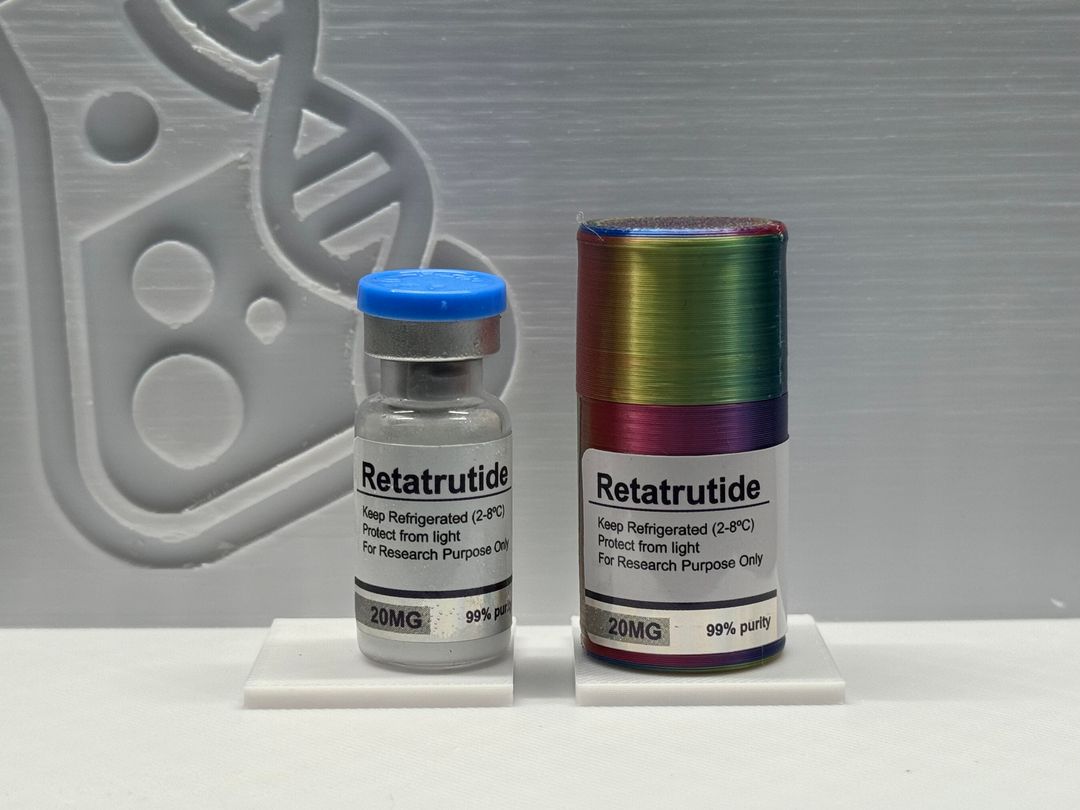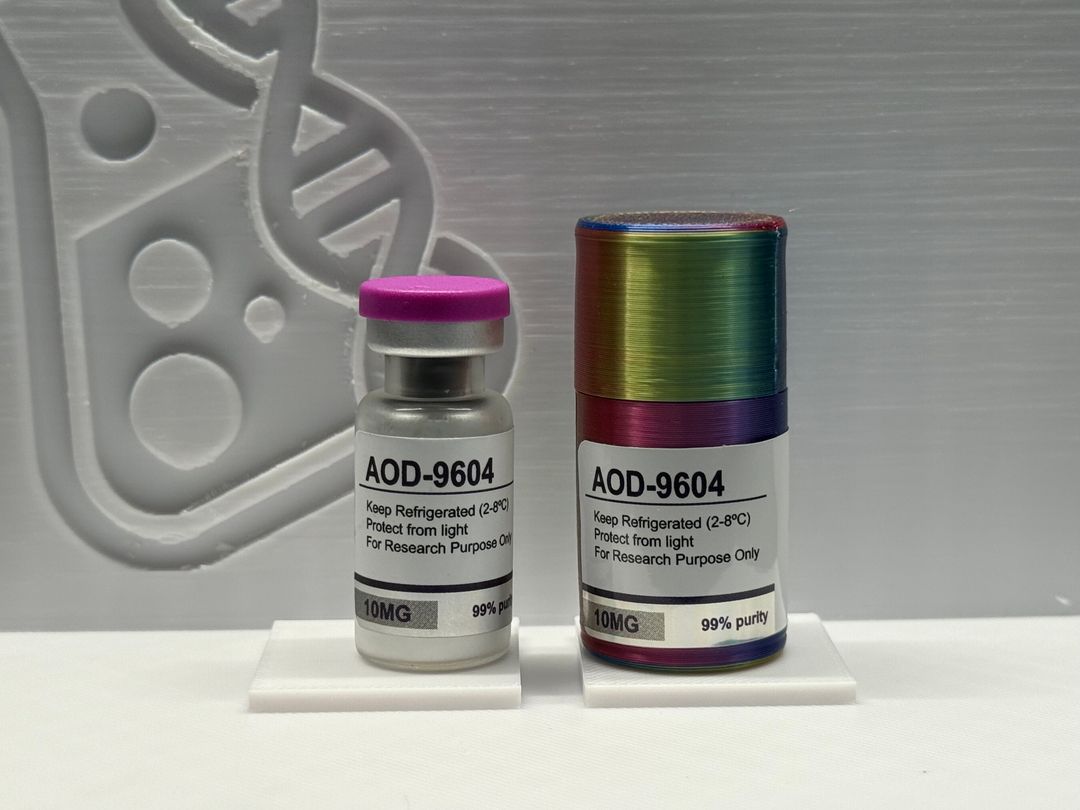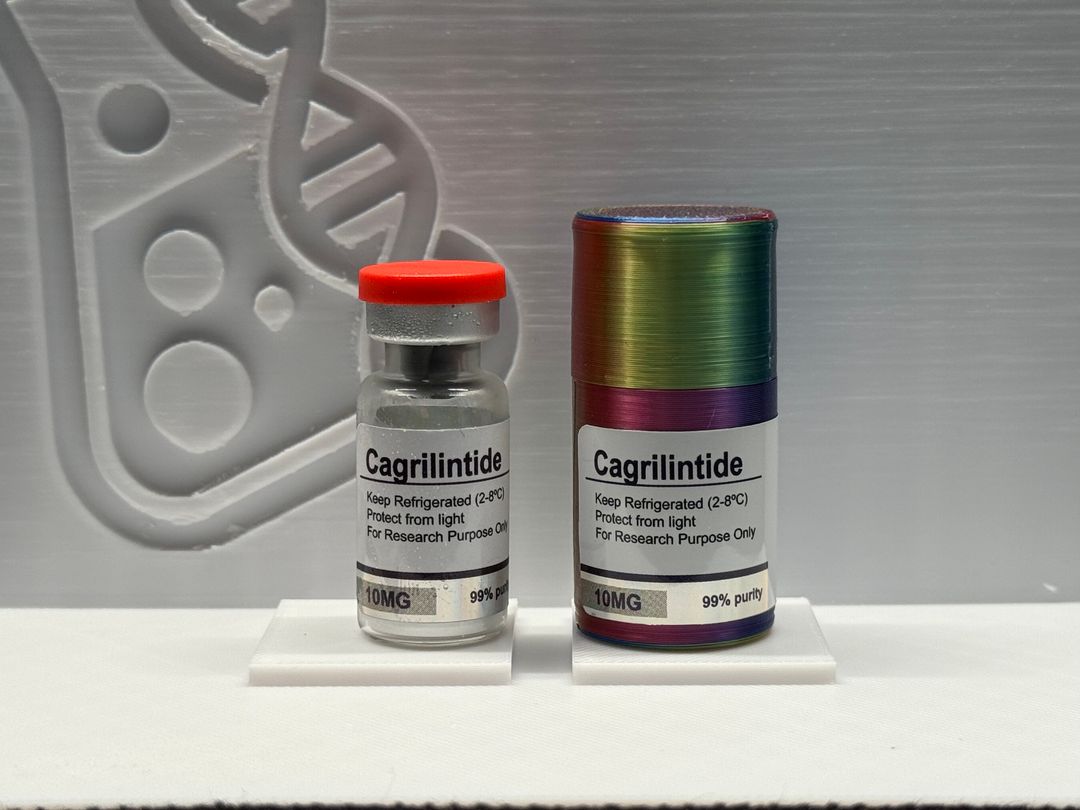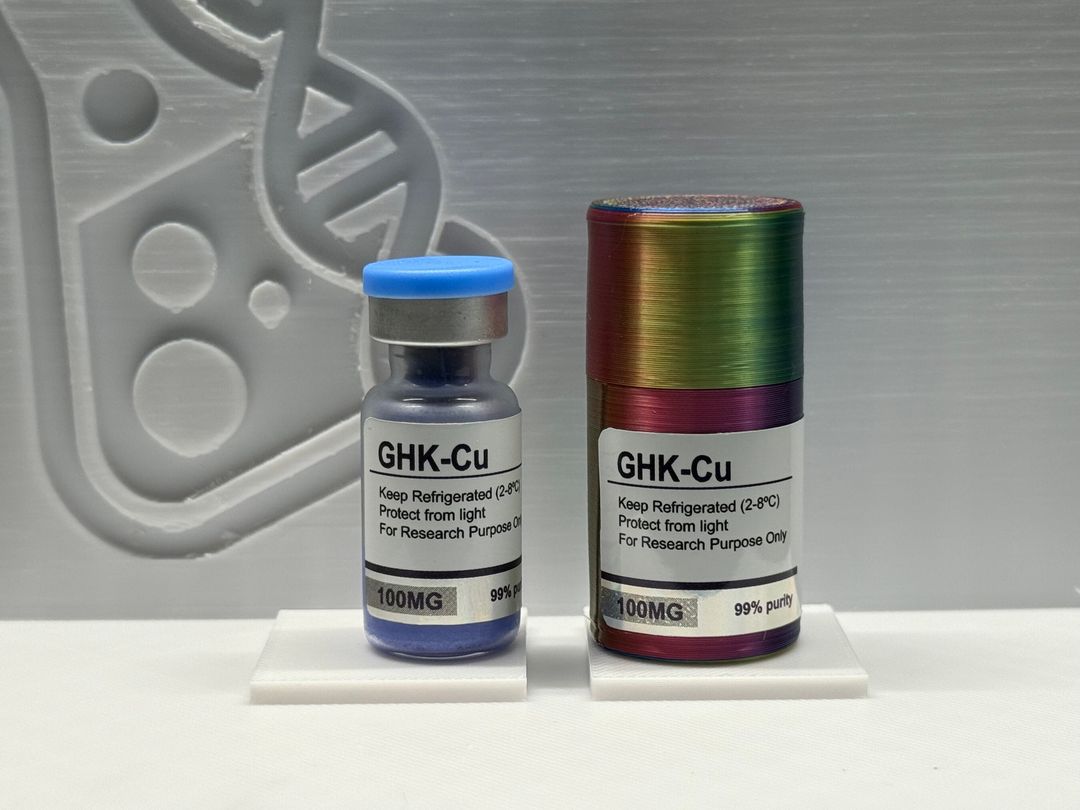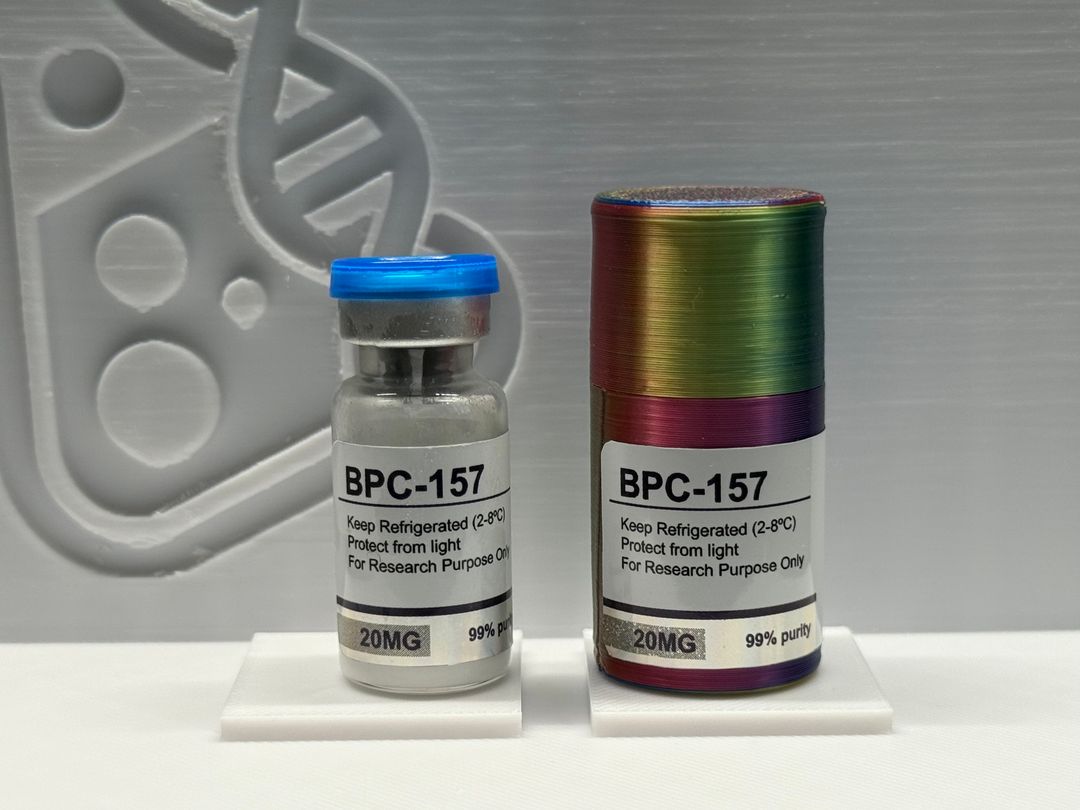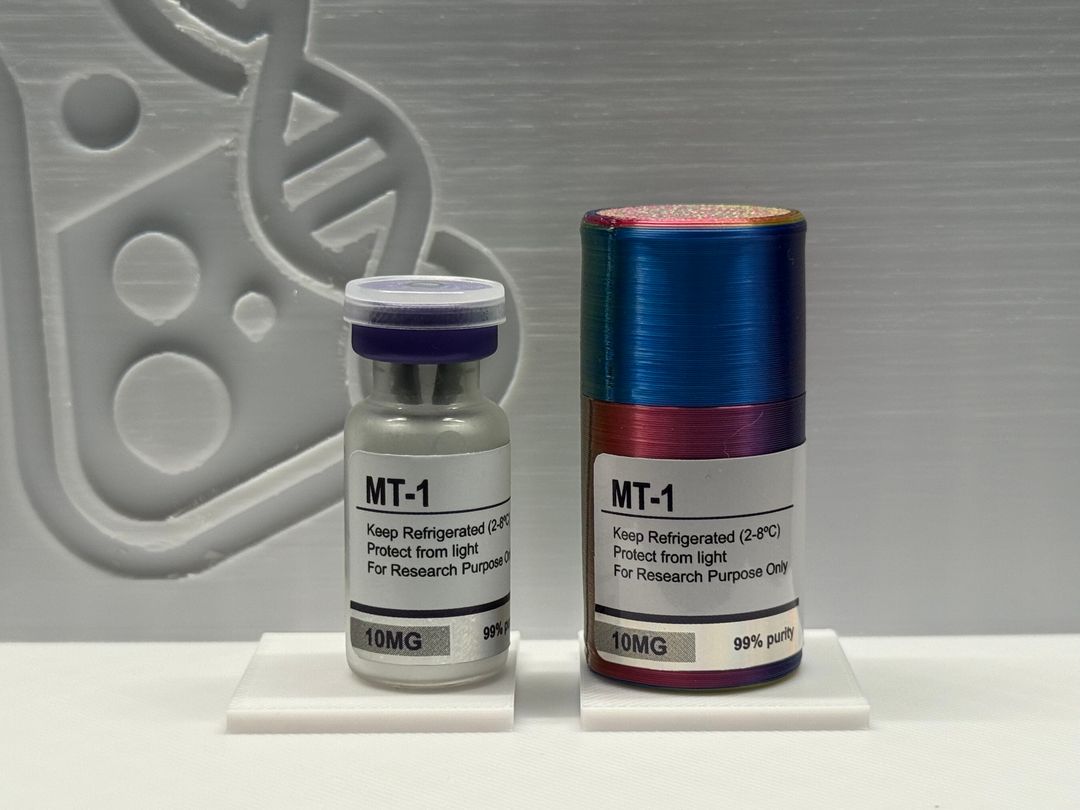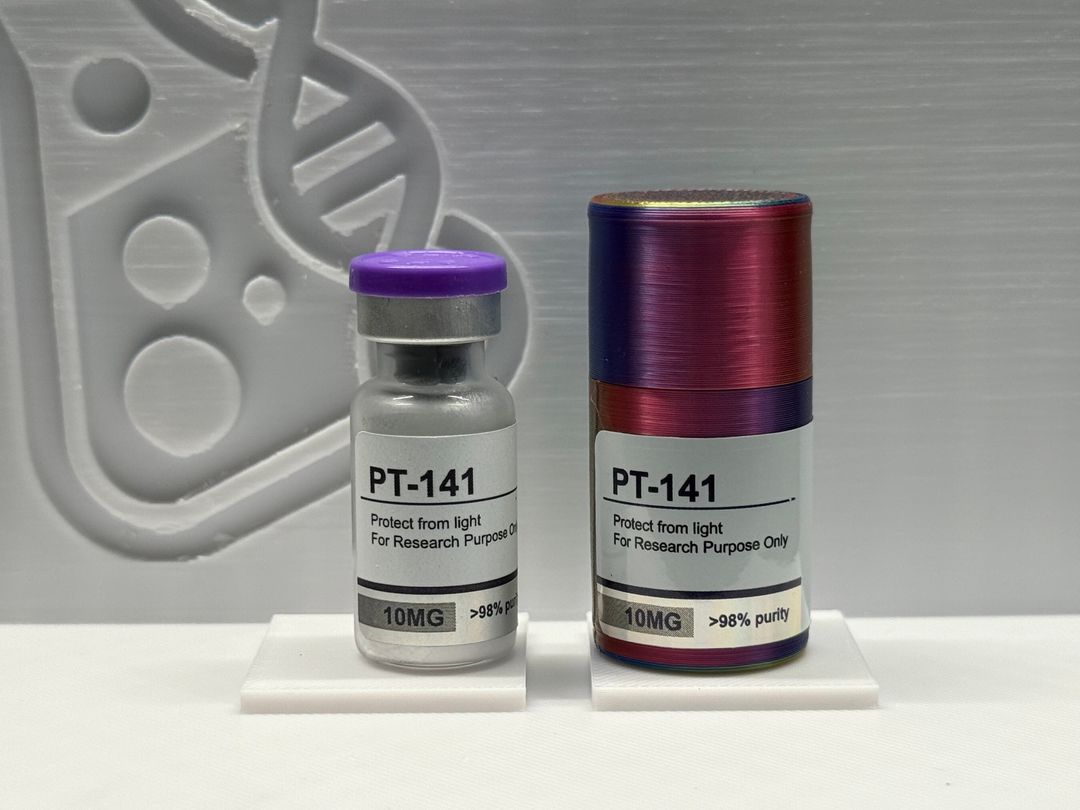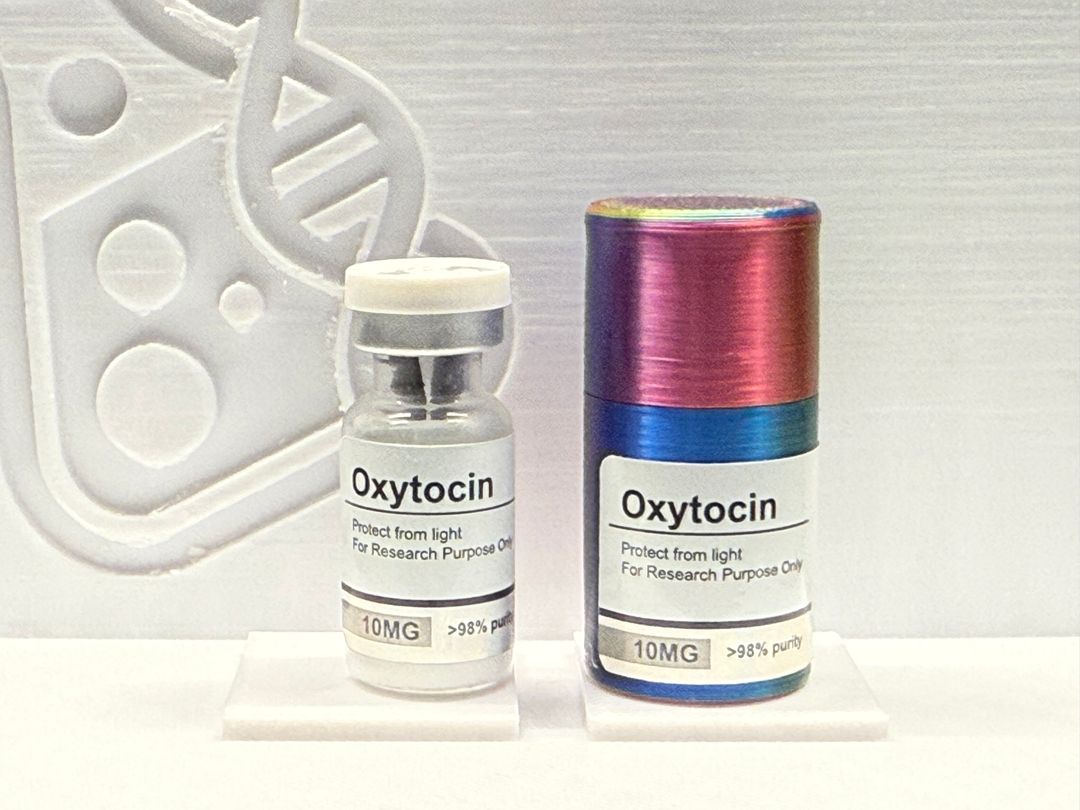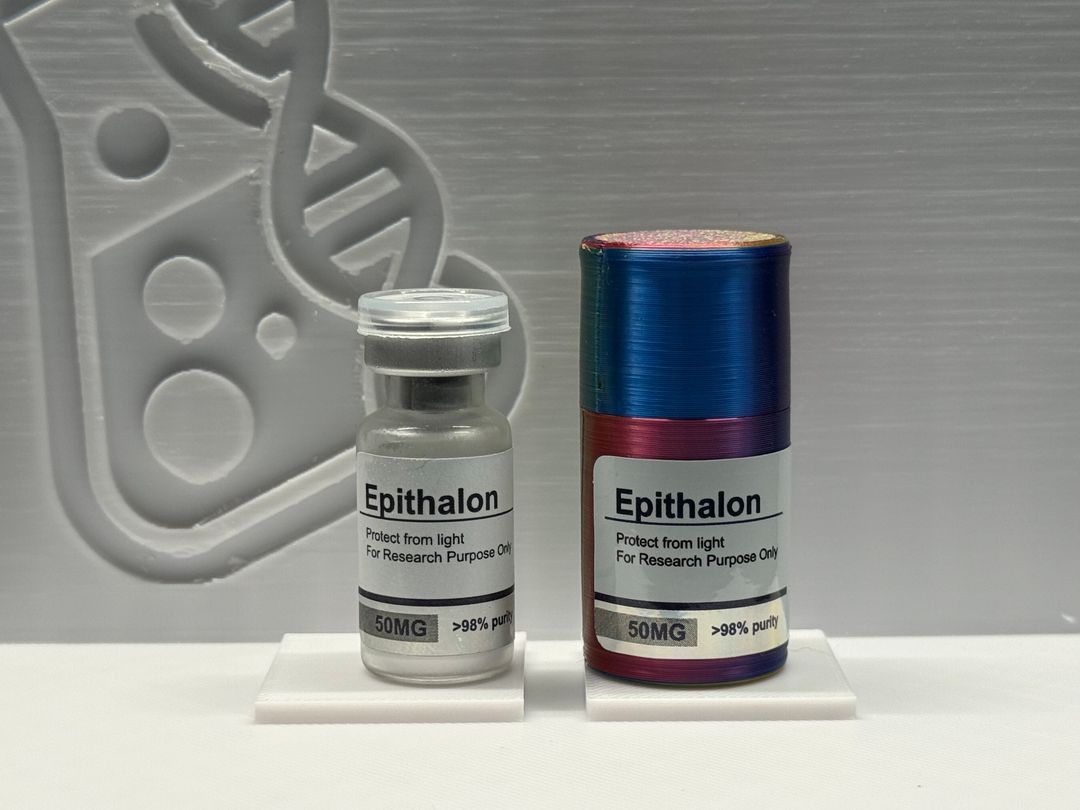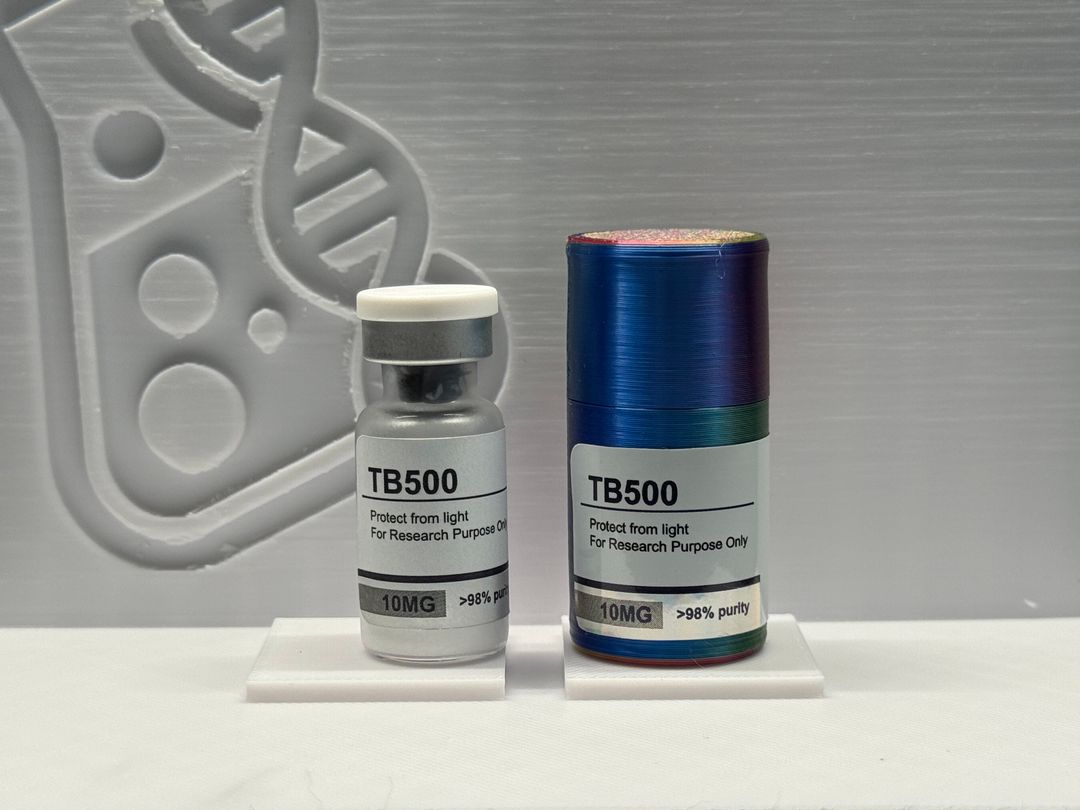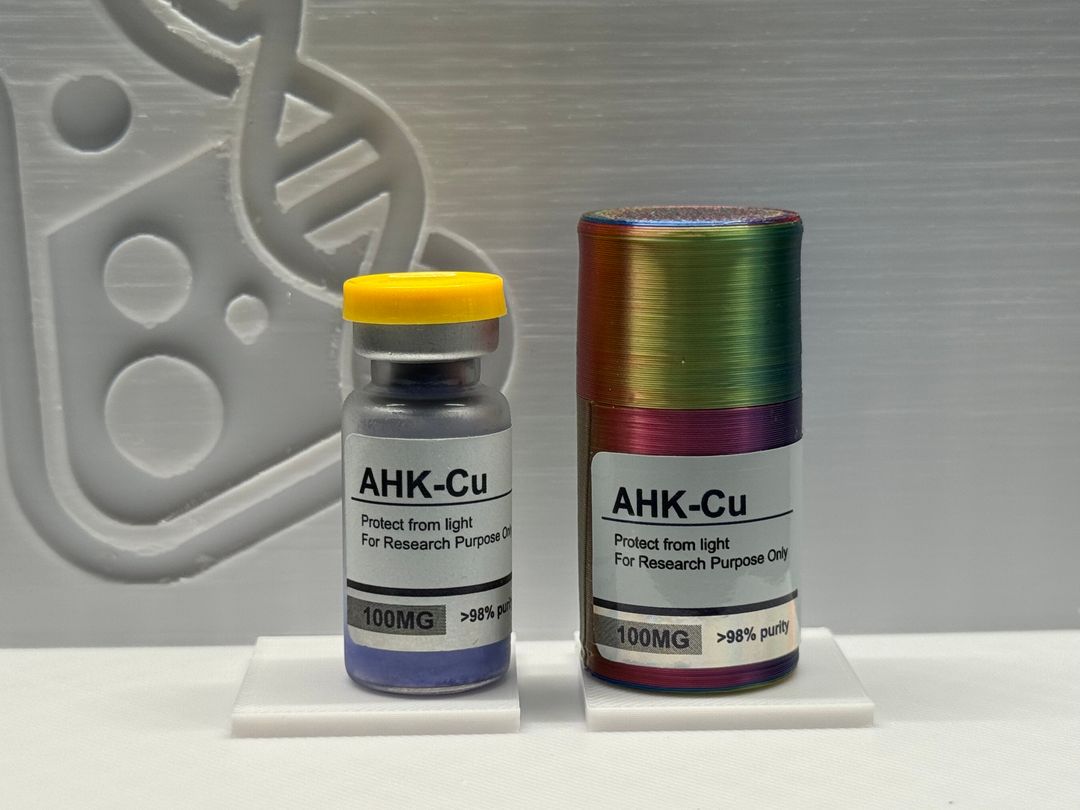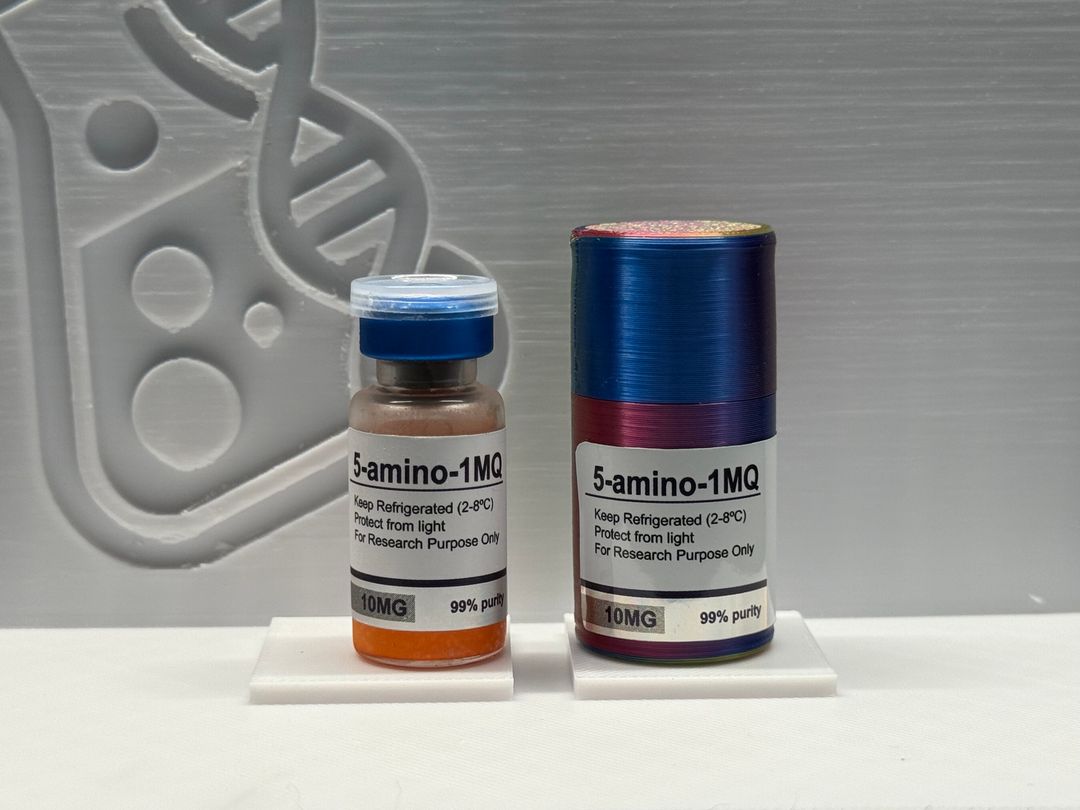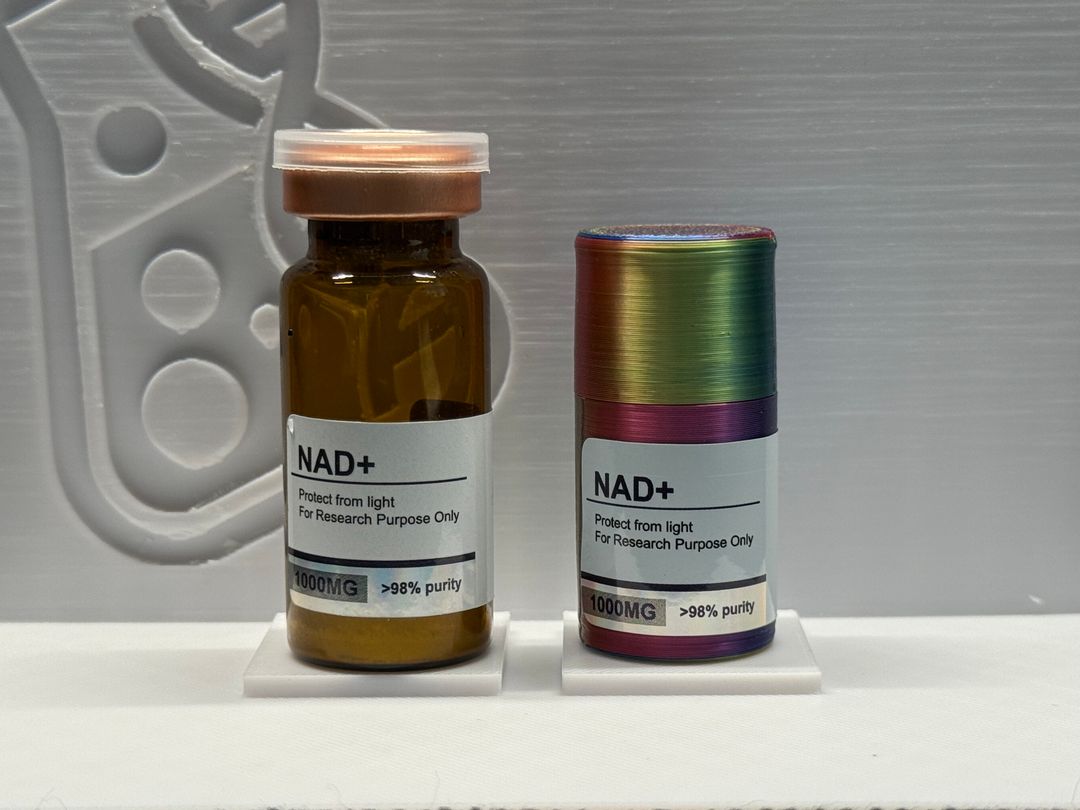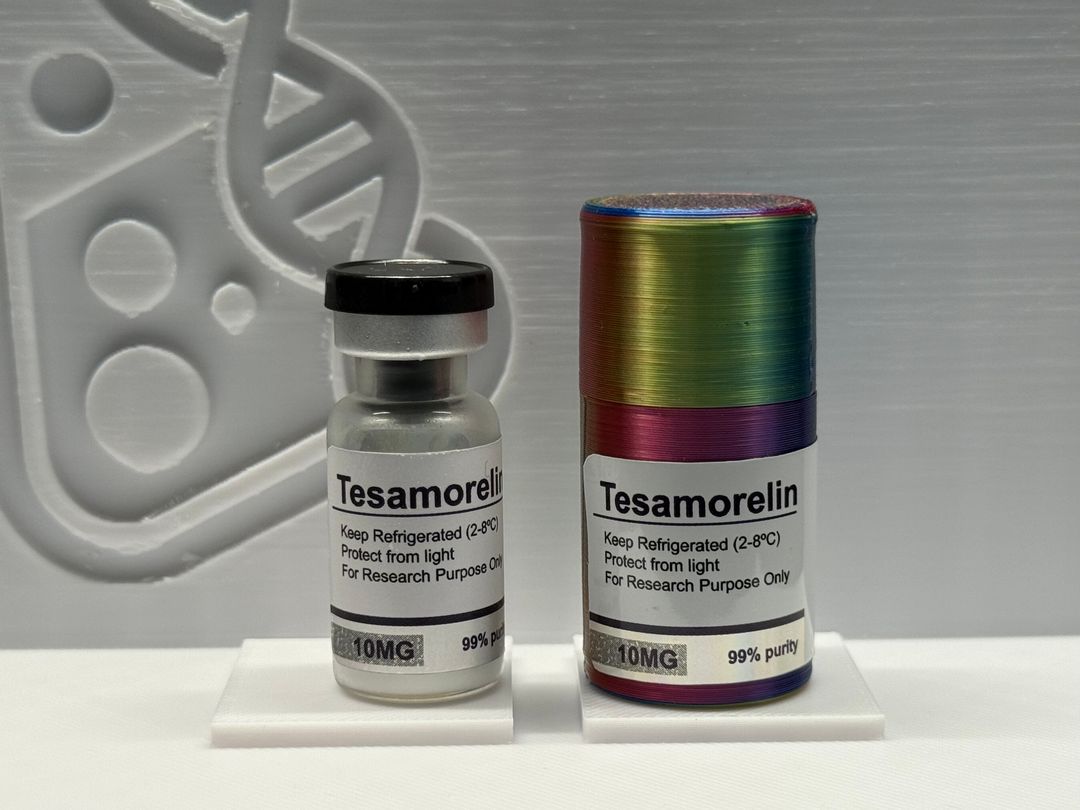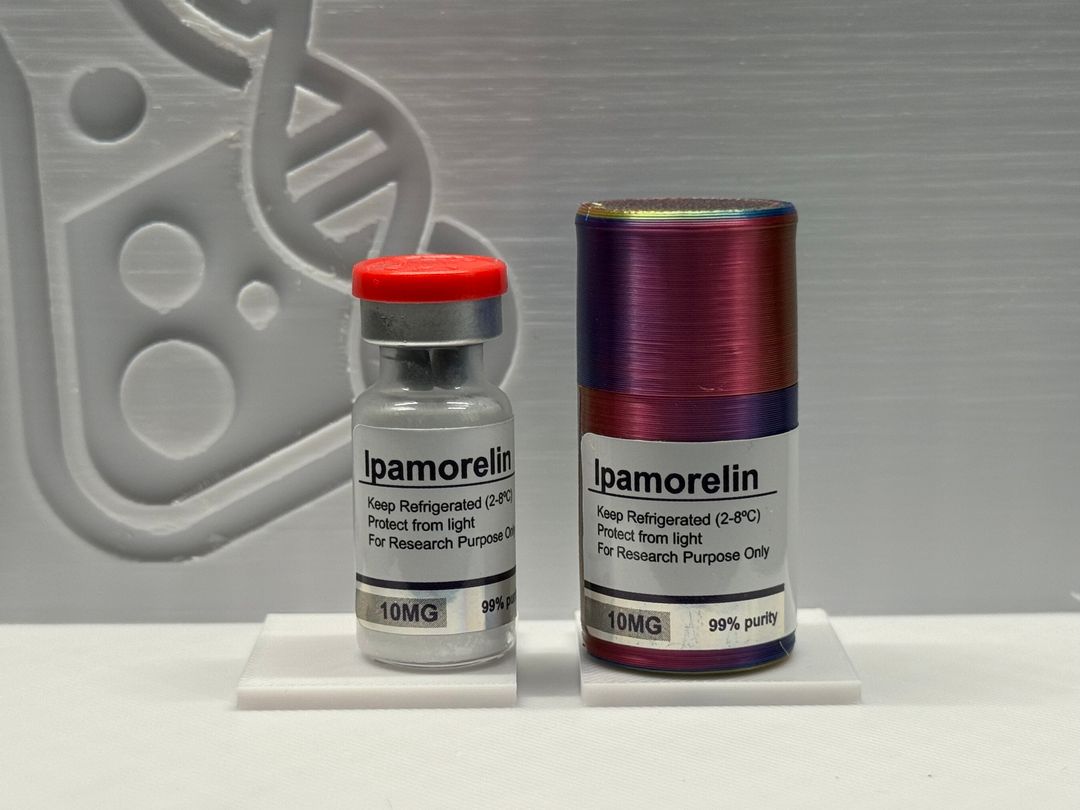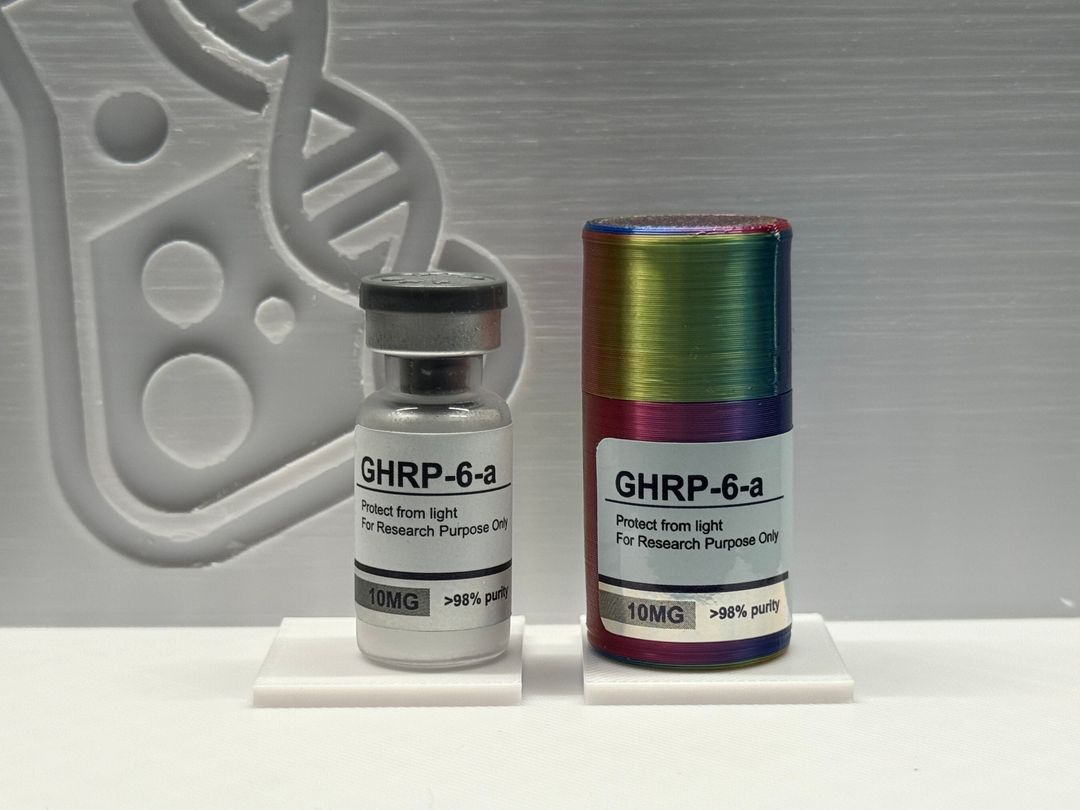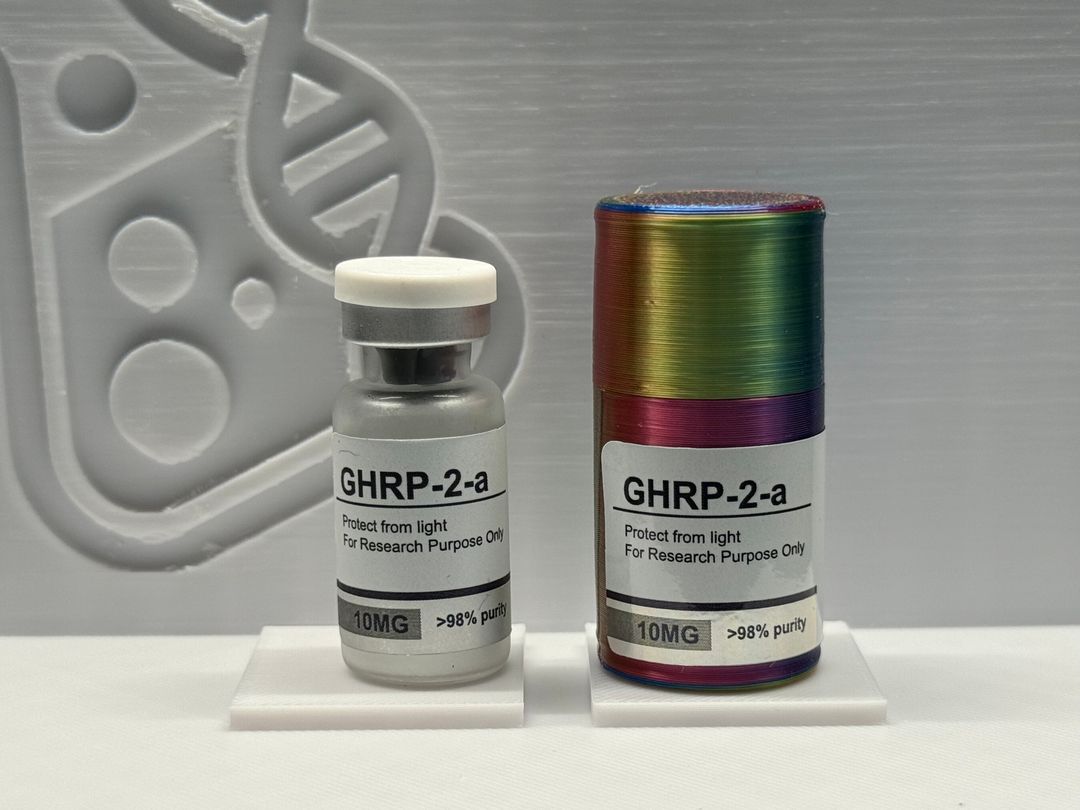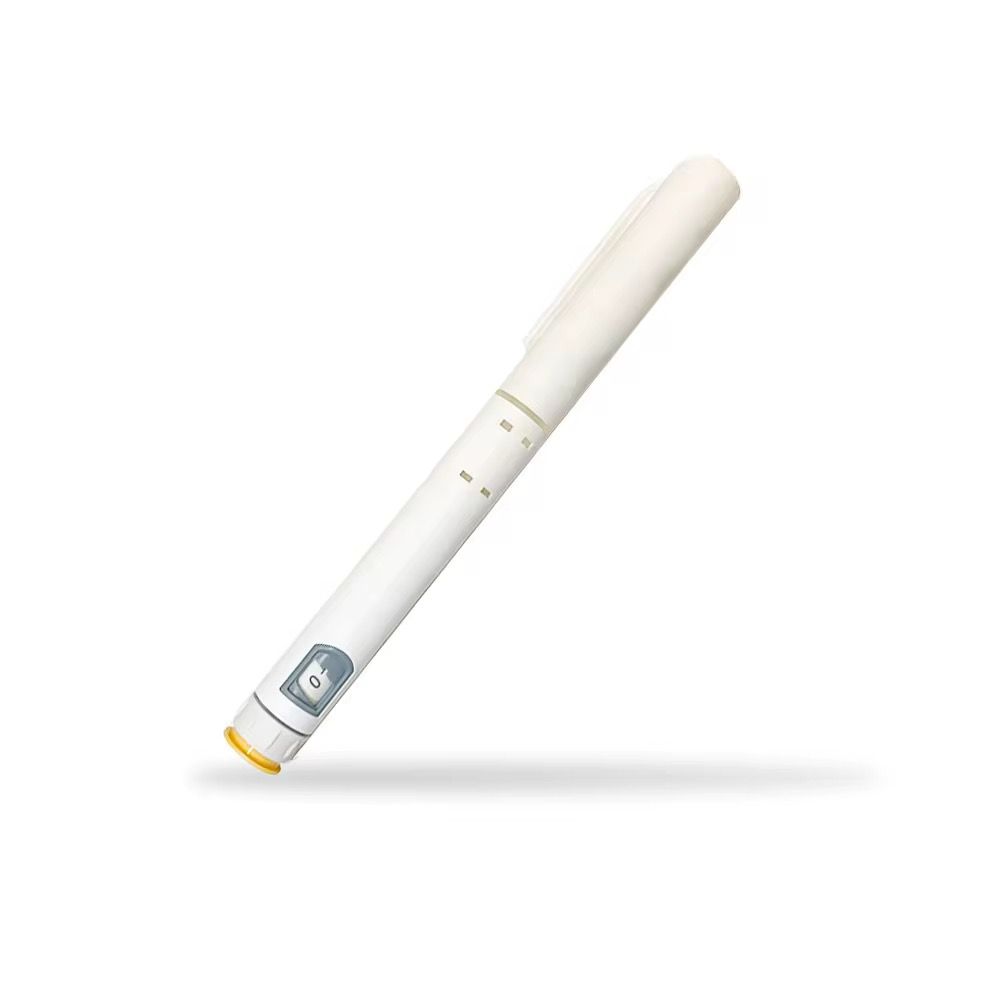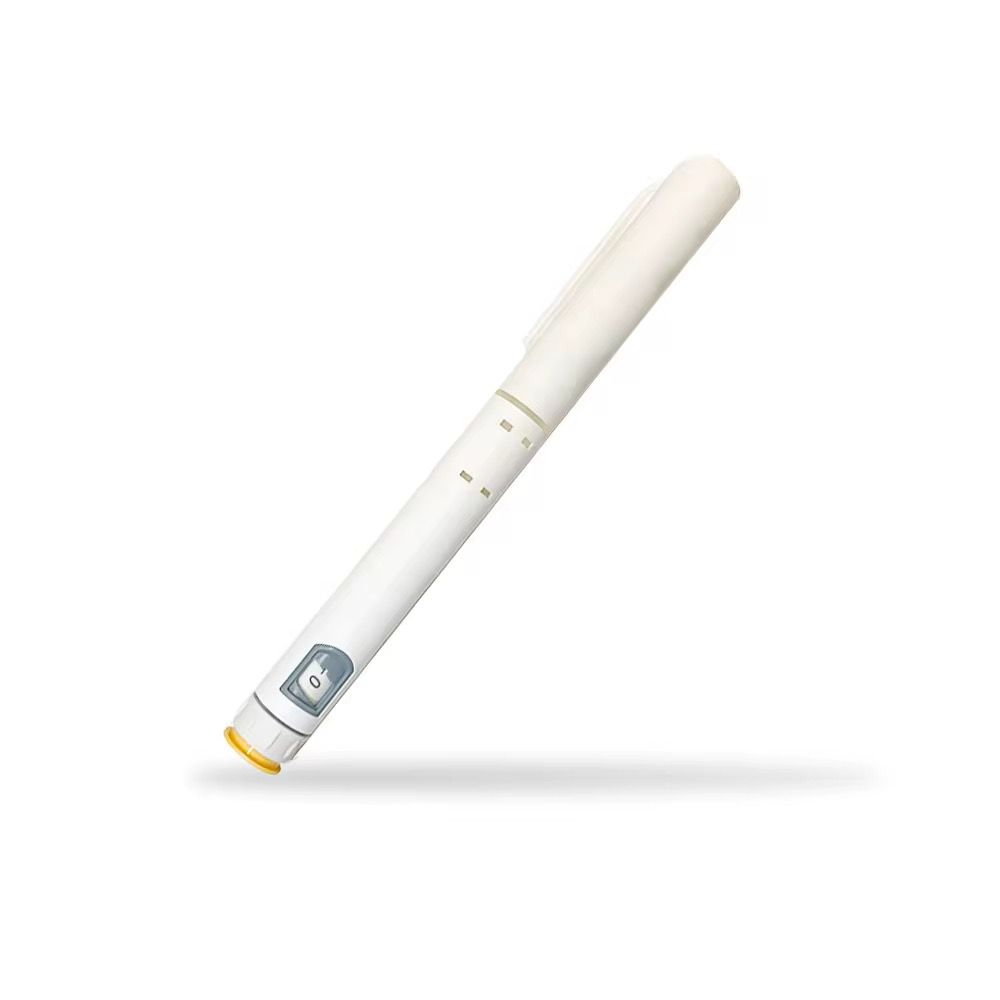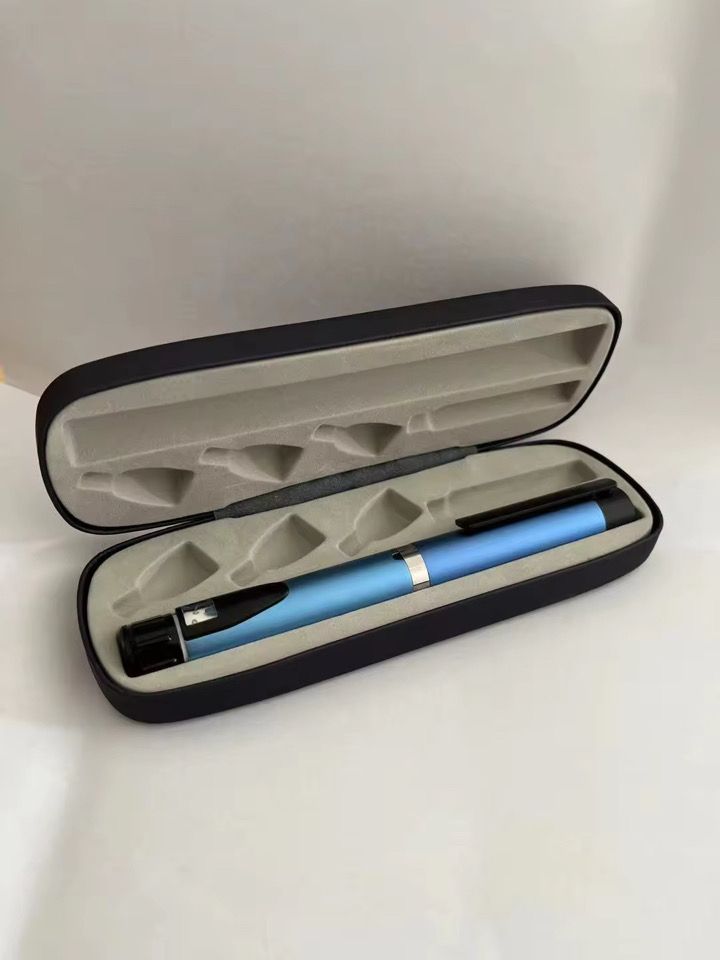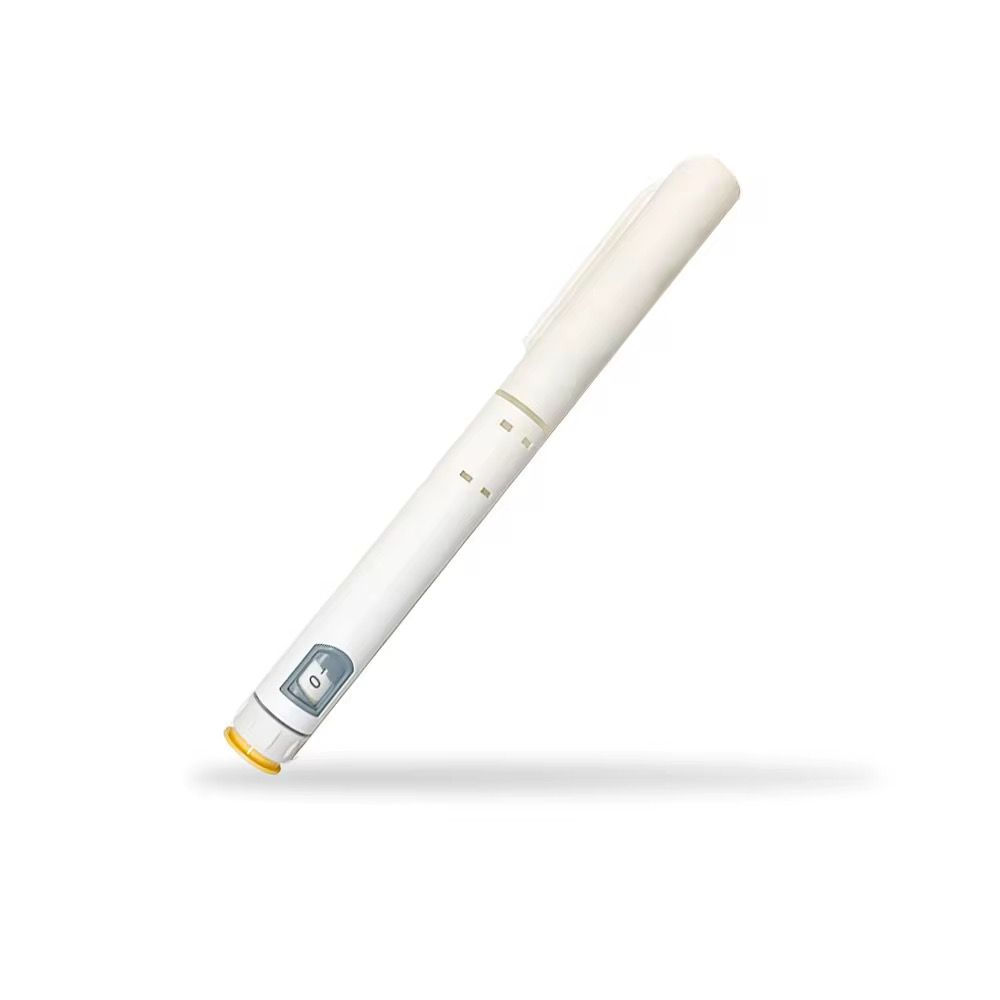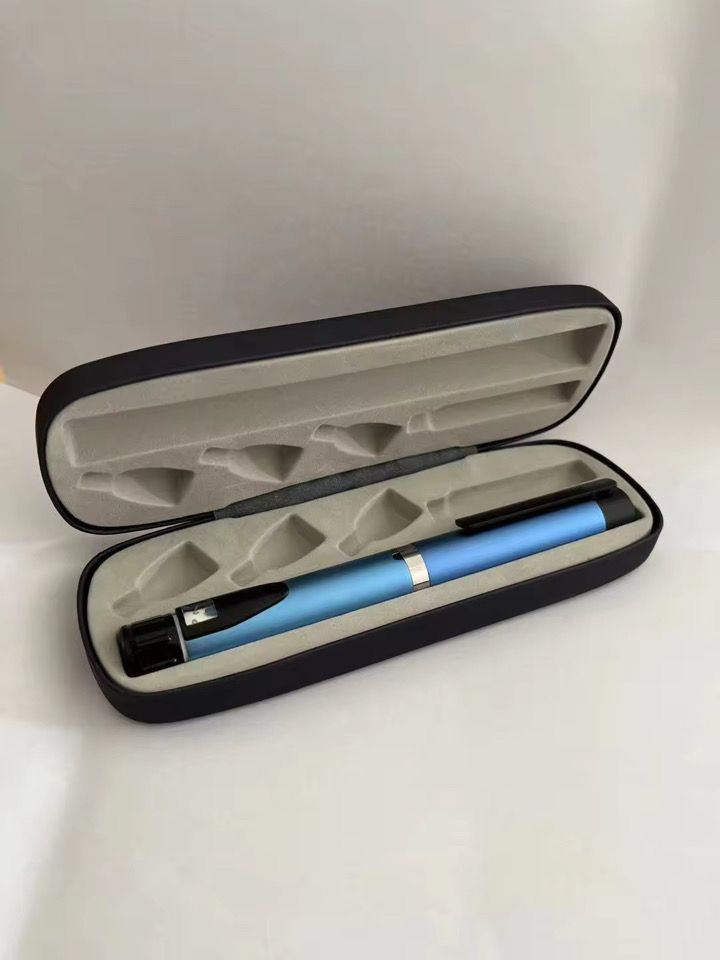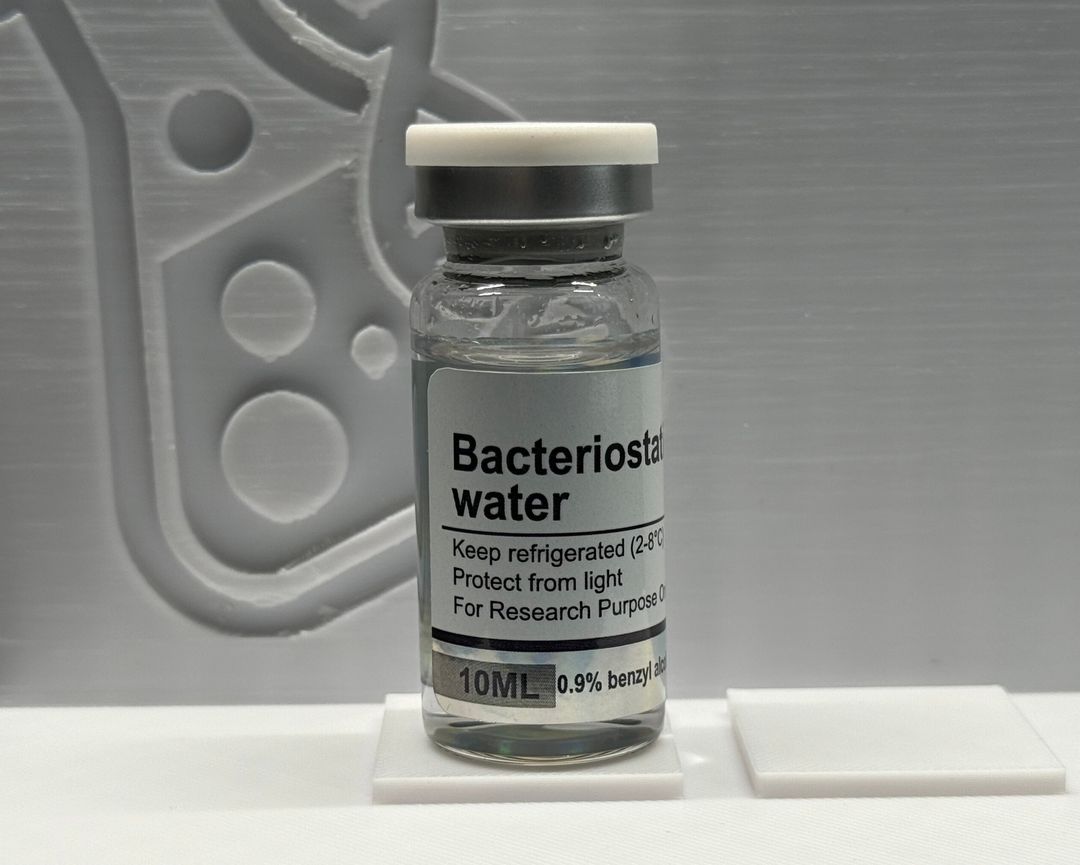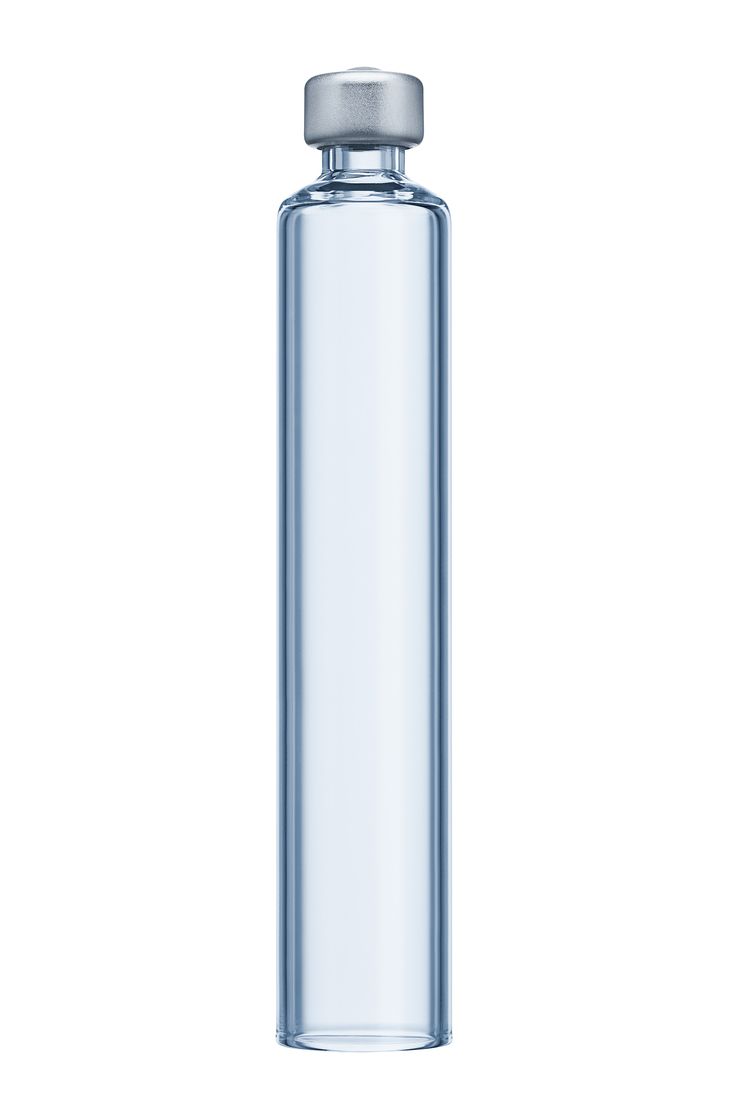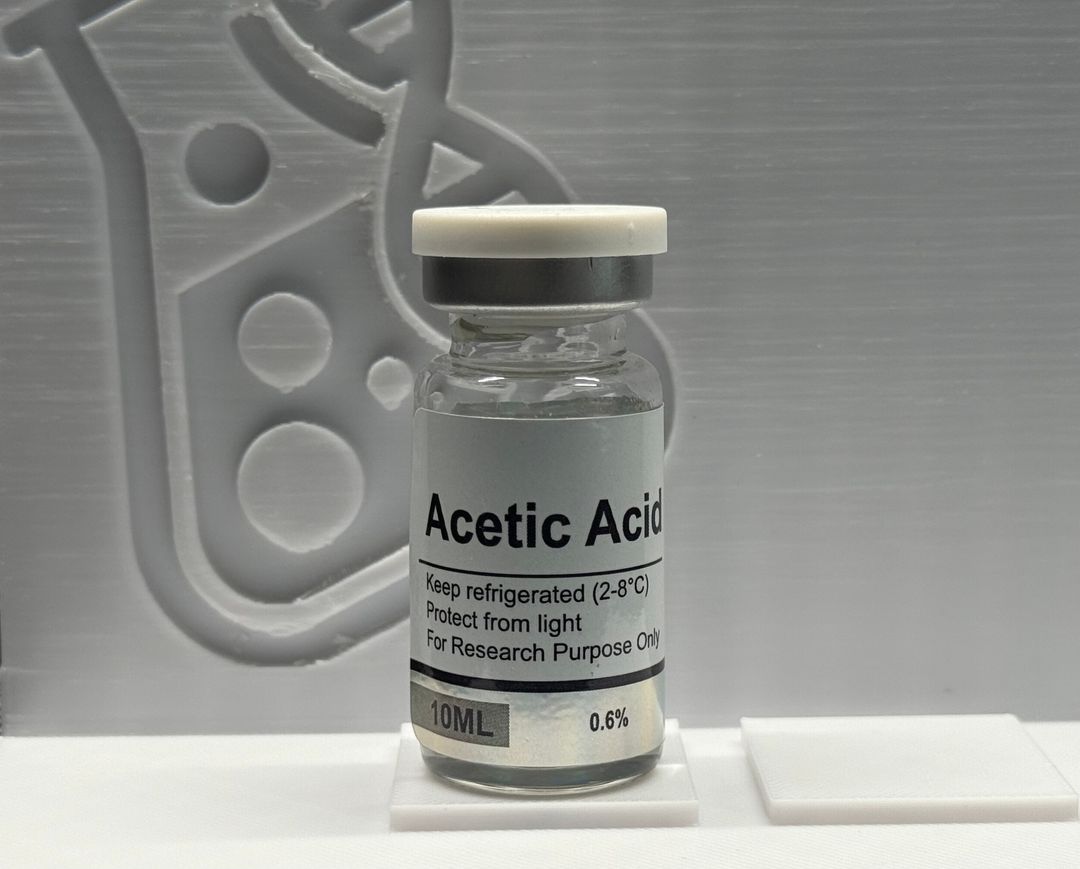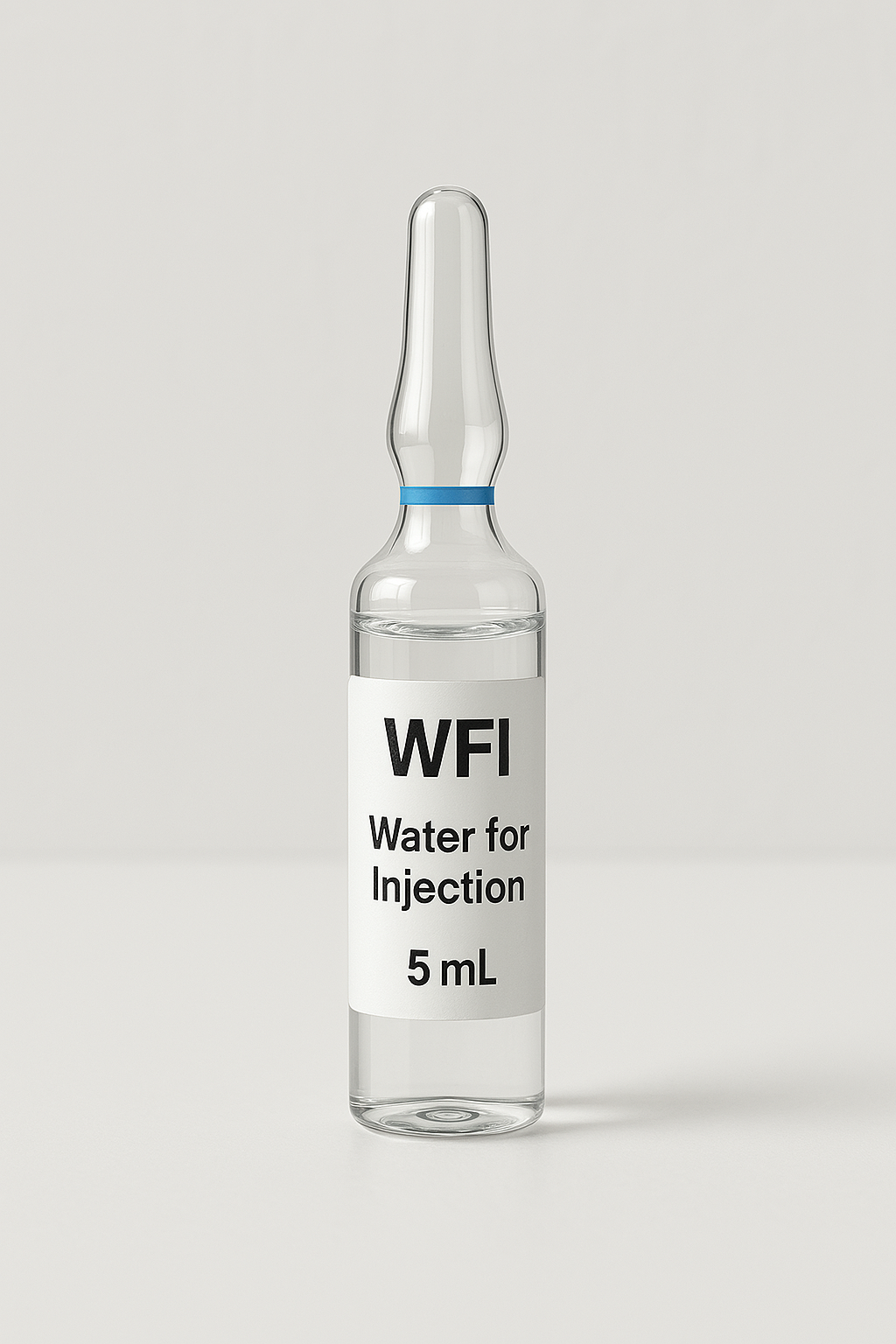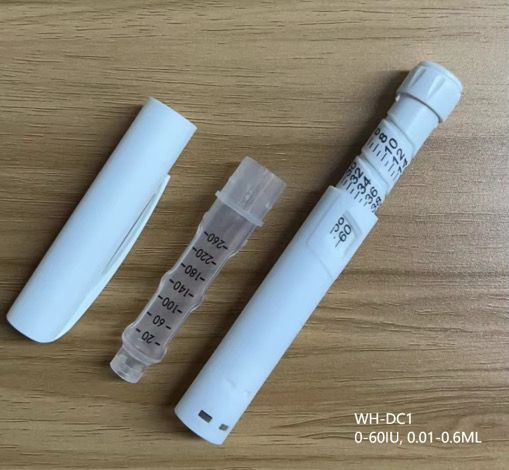Biochem-Peptides
At Biochem Peptides, we’re more than a supplier—we’re a science-driven, family-founded company with a mission to elevate the standard of peptide research in the UK&NI. Born from over five years of rigorous exploration into the therapeutic potential of peptides, our journey culminated in the launch of Biochem Peptides in 2025: a brand built on precision, integrity, and purpose.
We specialise in sourcing premium-grade research peptides with verified purity and scientific accuracy. Every compound we offer is selected with meticulous care, ensuring researchers and professionals have access to the highest-quality materials for their work. Our commitment to transparency, consistency, and ethical sourcing sets us apart in a market where trust is paramount.
But our vision goes deeper. We believe in the power of educational research to unlock the full potential of peptide therapies. That’s why we invest in clear, actionable content—making complex science accessible and empowering our community to explore new frontiers in health optimisation and enhanced living.
At the core of Biochem Peptides are the values that define us: trust, loyalty, and respect. These principles guide every product we release, every guide we publish, and every relationship we build. We’re not just building a business—we’re building a movement rooted in scientific excellence and shared discovery.
All of our contact details can be found here:
Retatrutide 20mg (Lyophilized Vial)
🧬 Retatrutide – Triple Receptor Agonist (GLP-1 + GIP + Glucagon) Synonyms: LY3437943 CAS Number: 2768074-01-5 Sequence: C₂₈₄H₄₅₂N₇₈O₈₅ Molecular Weight: ~6,000 Da (approximate) Form: Lyophilized powder Purity: ≥98% (HPLC) Research Use Only. This compound is not approved for human or veterinary use.. --- Description: Retatrutide is a next-generation synthetic peptide designed as a tri-agonist targeting three key metabolic receptors: GLP-1R (glucagon-like peptide-1 receptor), GIPR (glucose-dependent insulinotropic polypeptide receptor), and GCGR (glucagon receptor). This multi-receptor engagement positions Retatrutide at the forefront of research into energy homeostasis, adiposity modulation, and glycemic regulation. --- ⚙️ Mechanism of Action: Retatrutide’s triple agonist profile initiates a coordinated metabolic response: • GLP-1R Activation: Enhances insulin secretion, suppresses glucagon, delays gastric emptying • GIPR Activation: Amplifies insulinotropic effects and supports lipid metabolism • GCGR Activation: Promotes energy expenditure via hepatic and adipose tissue pathways This integrated signaling cascade is under investigation for its potential to reduce caloric intake, increase thermogenesis, and improve insulin sensitivity in preclinical models. --- 📈 Research Applications: Retatrutide is being explored in metabolic research for its potential to: • Modulate body weight and adiposity • Improve glucose tolerance and insulin dynamics • Influence lipid profiles and hepatic fat content • Support multi-axis endocrine regulation Its tri-receptor activity offers a unique scaffold for studying combinatorial incretin and glucagon signaling in metabolic disease models. --- 📦 Packaging & Handling: • Supplied as a sterile-filtered lyophilized peptide • Store at –20°C in a desiccated environment • Reconstitute with bacteriostatic water, acetic acid, or other suitable diluent • store in a refrigerator once a reconstituted solution to maintain stability 2-8 °C
£120.00
£130.00
AOD-9604 10mg (Lyophilized Vial)
🧬 AOD-9604 – Modified hGH Fragment (176–191) for Lipolytic Research Synonyms: Anti-Obesity Drug 9604, hGH Frag 176–191, Tyr-hGH(176–191) CAS Number: 221231-10-3 Sequence: Tyr-Leu-Arg-Ile-Val-Gln-Cys-Arg-Ser-Val-Glu-Gly-Ser-Cys-Gly-Phe Molecular Weight: ~1,814 Da Form: Lyophilized powder Purity: ≥98% (HPLC) Research Use Only. This compound is not approved for human or veterinary use.. --- Description: AOD-9604 is a synthetic peptide fragment derived from the C-terminal region (176–191) of human growth hormone (hGH), specifically engineered to retain the lipolytic (fat-burning) properties of hGH without its anabolic or diabetogenic effects. By isolating this bioactive domain and adding a tyrosine residue at the N-terminus, AOD-9604 exhibits enhanced metabolic stability and receptor selectivity, making it a compelling candidate in adipose tissue metabolism research. --- ⚙️ Mechanism of Action: AOD-9604 is believed to exert its effects through: • Stimulation of lipolysis: Promotes breakdown of stored triglycerides in adipocytes • Inhibition of lipogenesis: Reduces conversion of non-fat substrates into fat • Selective action on adipose tissue: Minimal impact on muscle growth or IGF-1 levels Unlike full-length hGH, AOD-9604 does not stimulate insulin resistance or linear growth, making it a focused tool for studying fat metabolism without systemic endocrine disruption A. --- 📈 Research Applications: AOD-9604 is under investigation in preclinical models for: • Obesity and adiposity modulation • Targeted fat reduction protocols • Metabolic syndrome and lipid regulation • Synergistic use with GLP-1 analogs (e.g., Semaglutide) in combination studies Its unique mechanism makes it suitable for localized fat metabolism studies and non-anabolic metabolic modulation. --- 📦 Packaging & Handling: • Supplied as a sterile-filtered lyophilized peptide • Store at –20°C in a desiccated, light-protected environment • Reconstitute with bacteriostatic water or acetic acid as appropriate • store in the refrigerator once a reconstituted solution to preserve bioactivity 2-8°C
£50.00
£55.00
Cagrilintide 10mg (Lyophilized Vial)
🧬 Cagrilintide – Long-Acting Amylin & Calcitonin Receptor Agonist (DACRA) Synonyms: AM833, NNC0174-0833 CAS Number: 2768074-01-5 Sequence: C₂₈₄H₄₃₀N₇₈O₈₄ Molecular Weight: ~5,800–6,000 Da (approximate) Form: Lyophilized powder Purity: ≥98% (HPLC) Research Use Only. This compound is not approved for human or veterinary use. --- Description: Cagrilintide is a synthetic peptide analog of human amylin, engineered to act as a dual amylin and calcitonin receptor agonist (DACRA). It is structurally optimized for enhanced receptor binding, metabolic stability, and reduced fibrillogenicity. Cagrilintide is under active investigation for its role in appetite regulation, gastric motility, and glucagon suppression, making it a compelling candidate in the study of obesity, type 2 diabetes, and energy balance. --- ⚙️ Mechanism of Action: Cagrilintide exerts its effects through coordinated activation of: • Amylin Receptors: Modulates postprandial glucagon secretion, slows gastric emptying, and enhances satiety signaling • Calcitonin Receptors: Contributes to appetite suppression and may influence glucose and lipid metabolism Its long-acting profile allows for sustained receptor engagement, supporting extended observation windows in metabolic research models. --- 📈 Research Applications: Cagrilintide is being explored in preclinical settings for its potential to: • Reduce caloric intake and body weight • Improve glycemic control and insulin sensitivity • Enhance satiety signaling and gastric regulation • Serve as a synergistic agent in combination with GLP-1 analogs (e.g., Semaglutide) Its dual-receptor activity offers a unique platform for studying multi-hormonal modulation of metabolic pathways. --- 📦 Packaging & Handling: • Supplied as a sterile-filtered lyophilized peptide • Store at –20°C in a dry, light-protected environment • Reconstitute with bacteriostatic water, acetic acid, or other suitable diluent • store in the refrigerator once a reconstituted solution to preserve bioactivity 2-8 °C
£70.00
£80.00
GHK-Cu 100mg (Lyophilized Vial)
🧬 GHK-Cu – Copper-Binding Tripeptide for Regenerative & Anti-Aging Research Synonyms: Glycyl-L-Histidyl-L-Lysine Copper Complex, Copper Tripeptide-1 CAS Number: 89030-95-5 Sequence: Gly-His-Lys·Cu²⁺ Molecular Weight: ~403.9 Da (complexed form) Form: Lyophilized powder Purity: ≥98% (HPLC) Research Use Only. This compound is not approved for human or veterinary use.. --- Description: GHK-Cu is a naturally occurring copper-binding tripeptide composed of glycine, histidine, and lysine, complexed with a divalent copper ion (Cu²⁺). It is endogenously present in plasma, saliva, and urine, with levels declining significantly with age. GHK-Cu is under active investigation for its role in tissue remodeling, wound healing, angiogenesis, and anti-inflammatory signaling, making it a versatile scaffold in regenerative and dermatological research. --- ⚙️ Mechanism of Action: GHK-Cu exerts its biological effects through multiple converging pathways: • Collagen & ECM Remodeling: Stimulates synthesis of collagen, elastin, glycosaminoglycans, and decorin • Anti-Inflammatory Modulation: Downregulates pro-inflammatory cytokines (e.g., TNF-α, IL-6) • Angiogenesis Support: Provides bioavailable copper essential for vascular endothelial growth • Wound Healing: Enhances fibroblast activity and promotes scarless tissue regeneration • Neuroregeneration: Encourages axonal outgrowth and synaptic repair in neuronal models • DNA Repair & Epigenetic Resetting: Shown to influence gene expression linked to cellular rejuvenation Its ability to act as a tissue-specific signaling molecule makes it a compelling candidate in both cosmetic and therapeutic research domains. --- 📈 Research Applications: GHK-Cu is being explored in preclinical and in vitro models for: • Skin regeneration and anti-aging • Hair follicle stimulation and pigmentation • Wound healing and scar reduction • Neuroinflammation and nerve repair • Osteogenesis and bone remodeling • UV protection and photodamage mitigation Its non-hormonal, non-immunogenic profile makes it suitable for long-term regenerative studies. --- 📦 Packaging & Handling: • Supplied as a sterile-filtered lyophilized peptide–metal complex • Store at –20°C, protected from light and moisture • Reconstitute with bacteriostatic water, saline, or appropriate buffer • Store in the refrigerator once in a reconstituted solution to preserve stability 2-8 °C
£40.00
£45.00
BPC-157 20MG (Lyophilized Vial)
🧬 BPC-157 – Regenerative Peptide for Angiogenesis, Tissue Repair & Gastrointestinal Research Synonyms: Body Protection Compound-157, PL 14736 CAS Number: 137525-51-0 Sequence: Gly-Glu-Pro-Pro-Pro-Gly-Lys-Pro-Ala-Asp-Asp-Ala-Gly-Leu-Val Molecular Weight: ~1419.5 Da Form: Lyophilized powder Purity: ≥98% (HPLC) Research Use Only. This compound is not approved for human or veterinary use.. --- Description: BPC-157 is a synthetic pentadecapeptide derived from a partial sequence of Body Protection Compound (BPC), a protein naturally found in human gastric juice. It is under active investigation for its multifaceted regenerative properties, particularly in models of muscle, tendon, nerve, and gastrointestinal repair. BPC-157 is known to modulate angiogenesis, collagen synthesis, and inflammatory signaling, making it a versatile scaffold in wound healing and organoprotection research. --- ⚙️ Mechanism of Action: Although not fully elucidated, BPC-157 is believed to act through several converging pathways: • VEGF Upregulation: Promotes angiogenesis and microvascular repair • Fibroblast Activation: Enhances collagen production and extracellular matrix remodeling • Anti-Inflammatory Modulation: Downregulates pro-inflammatory cytokines (e.g., TNF-α, IL-6) • Neuroregeneration: Supports axonal outgrowth and synaptic repair in peripheral nerve models • Gastrointestinal Protection: Accelerates healing of ulcers and mitigates NSAID-induced mucosal damage Its systemic effects have been observed in both local injury models and systemic inflammatory conditions. --- 📈 Research Applications: BPC-157 is being explored in preclinical and in vitro models for: • Tendon-to-bone healing and ligament repair • Skeletal muscle regeneration and myocyte protection • Gastrointestinal mucosal healing (e.g., IBD, ulcers) • Peripheral nerve injury and neuroinflammation • Joint health and arthritis models • Angiogenesis and ischemic tissue recovery Its non-anabolic, non-hormonal profile makes it suitable for diverse regenerative studies without endocrine disruption. --- 📦 Packaging & Handling: • Supplied as a sterile-filtered lyophilized peptide • Store at –20°C, protected from light and moisture • Reconstitute with bacteriostatic water, acetic acid, or appropriate diluent • Store in the refrigerator once in a reconstituted solution to preserve bioactivity 2-8°C
£40.00
£45.00
Melanotan 1 (Lyophilized Vial)
🧬 Melanotan 1 – Selective MC1R Agonist for Pigmentation Research Synonyms: Afamelanotide, [Nle⁴, D-Phe⁷]-α-MSH, CUV1647 CAS Number: 75921-69-6 Sequence: Ac-Ser-Tyr-Ser-Nle⁴-Glu-His-D-Phe⁷-Arg-Trp-Gly-Lys-Pro-Val-NH₂ Molecular Weight: ~1646.9 Da Form: Lyophilized powder Purity: ≥98% (HPLC) Research Use Only. This compound is not approved for human or veterinary use. --- Description: Melanotan 1 is a synthetic linear peptide analog of alpha-melanocyte-stimulating hormone (α-MSH), engineered to selectively activate the melanocortin 1 receptor (MC1R). This receptor is primarily expressed in melanocytes, where it regulates eumelanin production and UV-induced pigmentation. Melanotan 1 is structurally optimized for enhanced receptor affinity, proteolytic resistance, and prolonged biological activity, making it a valuable tool in pigmentation and photoprotection research. --- ⚙️ Mechanism of Action: Melanotan 1 binds with high specificity to MC1R, initiating a cAMP-mediated signaling cascade that: • Stimulates eumelanin synthesis via upregulation of tyrosinase and related enzymes • Enhances UV-induced pigmentation and melanocyte activation • May reduce UV-induced DNA damage by increasing melanin density Unlike Melanotan 2, MT-1 exhibits minimal off-target activity at MC3R and MC4R, reducing the likelihood of systemic or neuroendocrine effects in research models. --- 📈 Research Applications: Melanotan 1 is under investigation in preclinical and in vitro models for: • Skin pigmentation and photoprotection • Melanocyte biology and UV response • Eumelanin vs pheomelanin expression ratios • Potential synergy with UVB exposure in pigmentation studies Its receptor selectivity makes it ideal for targeted melanogenesis research without confounding systemic effects. --- 📦 Packaging & Handling: • Supplied as a sterile-filtered lyophilized peptide • Store at –20°C, protected from light and moisture • Reconstitute with bacteriostatic water, acetic acid, or other suitable diluent • Store in the refrigerator once a reconstituted solution to preserve integrity 2-8°C
£30.00
PT-141 10mg (Lyophilized Vial)
🧬 PT-141 – Melanocortin Receptor Agonist for Sexual Arousal & Neuroendocrine Research Synonyms: Bremelanotide, Vyleesi, α-MSH Analog CAS Number: 189691-06-3 Sequence: Ac-Nle-cyclo[Asp-His-D-Phe-Arg-Trp-Lys]-OH Molecular Weight: ~1025.2 Da Form: Lyophilized powder or pre-filled auto-injector Purity: ≥98% (HPLC) Research Use Only. This compound is not approved for human or veterinary use.. --- Description: PT-141 is a synthetic melanocortin receptor agonist derived from Melanotan II, designed to selectively activate MC3R and MC4R receptors in the central nervous system. Unlike PDE5 inhibitors, PT-141 works centrally, bypassing vascular pathways and directly stimulating sexual desire and arousal via hypothalamic signaling. It is FDA-approved under the name Bremelanotide for treating hypoactive sexual desire disorder (HSDD) in premenopausal women, and is under investigation for male erectile dysfunction, especially in sildenafil non-responders. --- ⚙️ Mechanism of Action: PT-141 binds to melanocortin receptors in the CNS, particularly MC4R, triggering: • Dopamine release in the medial preoptic area and hypothalamus • Sexual arousal independent of visual or tactile stimulation • Increased genital blood flow via neurogenic vasodilation • Appetite suppression and mild mood elevation in some models Its non-hormonal, non-vascular mechanism makes it a unique scaffold for studying neuroendocrine arousal pathways. --- 📈 Research Applications: PT-141 is under investigation in preclinical and clinical models for: • Female sexual dysfunction (HSDD, FSAD) • Male erectile dysfunction (ED) • Neuroendocrine signaling and dopamine modulation • Appetite regulation and melanocortin pathway mapping • Combination therapy with PDE5 inhibitors or amylin analogs In clinical trials, PT-141 demonstrated statistically significant increases in sexual desire and satisfaction, with onset typically within 30–60 minutes post-injection. --- 🧪 Dosing & Handling (Preclinical): • Typical dose: 1–2 mg SubQ; up to 10 mg in ED models • Onset: ~45 minutes; peak effect at 1–2 hours • Duration: ~6–8 hours • Cycle: No more than 8 doses/month (per FDA guidelines for HSDD) • Reconstitution: Use bacteriostatic water; • Store in the refrigerator once a reconstituted solution to preserve integrity 2-8°C --- 📦 Packaging & Storage: Supplied as lyophilized powder or pre-filled auto-injector pens. Reconstitute under sterile conditions. For research use only
£35.00
£42.50
Oxytocin 10mg (Lyophilized Vial)
🧬 Oxytocin – Neuropeptide for Social Bonding, Stress Modulation & Reproductive Research Synonyms: OXT, α-hypophamine, Pitocin (clinical) CAS Number: 50-56-6 Sequence: Cys-Tyr-Ile-Gln-Asn-Cys-Pro-Leu-Gly-NH₂ (disulfide bridge between Cys1–Cys6) Molecular Weight: ~1007.2 Da Form: Lyophilized powder or sterile injectable solution Purity: ≥98% (HPLC) Research Use Only. This compound is not approved for human or veterinary use. --- Description: Oxytocin is a cyclic nonapeptide hormone synthesized in the hypothalamic paraventricular and supraoptic nuclei, then released via the posterior pituitary. While classically known for its role in labor induction and milk ejection, oxytocin also acts as a central neuromodulator, influencing social cognition, emotional regulation, and stress resilience. It binds to G-protein–coupled oxytocin receptors (OXTR) in the brain and periphery, modulating circuits in the amygdala, prefrontal cortex, and gut-brain axis. --- ⚙️ Mechanism of Action: Oxytocin exerts its effects through: • CNS signaling: Enhances empathy, trust, and bonding via limbic system activation • HPA axis modulation: Reduces cortisol and dampens stress responses • Reproductive effects: Triggers uterine contractions and facilitates lactation • GI motility: Promotes smooth muscle contraction and modulates inflammation • Cardiovascular tone: Induces vasodilation via nitric oxide release • Neuroplasticity: Supports hippocampal synaptogenesis and memory consolidation Its dual role as hormone and neurotransmitter makes it a versatile scaffold for behavioral and physiological research. --- 📈 Research Applications: Oxytocin is under investigation in preclinical and clinical models for: • Social cognition and emotional processing • Anxiety, PTSD, and mood disorders • Autism spectrum disorder (ASD) • Appetite regulation and metabolic health • Reproductive physiology and lactation modeling • Pain modulation and neuroinflammation Studies show oxytocin enhances self-confidence, reduces social anxiety, and may improve interpersonal trust in competitive or high-pressure environments. --- 🧪 Dosing & Handling (Preclinical): • Typical dose: 40–75 mcg SubQ or intranasal, once daily • Onset: 30–60 minutes; duration 2–4 hours • Cycle: 4–6 weeks for behavioral modulation studies • Reconstitution: Use bacteriostatic water or 1:1 acetic acid for full solubilisation • Store in the refrigerator once a reconstituted solution to preserve integrity 2-8°C --- 📦 Packaging & Storage: Supplied as lyophilized powder in 10mg vials. Reconstitute under sterile conditions. Aliquot and refrigerate reconstituted solution for multi-dose use. For research use only.
£35.00
£40.00
Epithalon 50mg (Lyophilized Vial)
🧬 Epithalon – Telomerase-Activating Tetrapeptide for Cellular Longevity & Circadian Regulation Synonyms: Epitalon, AEDG peptide, Epithalone CAS Number: 307297-39-8 Sequence: Ala-Glu-Asp-Gly Molecular Weight: ~390.35 Da Form: Lyophilized powder Purity: ≥98% (HPLC) Research Use Only. This compound is not approved for human or veterinary use.. --- Description: Epithalon is a synthetic tetrapeptide bioregulator derived from epithalamin, a natural extract of the pineal gland. It was developed by Professor Vladimir Khavinson at the St. Petersburg Institute of Bioregulation and Gerontology. Epithalon is designed to stimulate telomerase activity, thereby promoting telomere elongation, genomic stability, and cellular longevity. It also modulates melatonin synthesis, making it a dual-action scaffold for anti-aging and circadian rhythm optimization. --- ⚙️ Mechanism of Action: Epithalon activates telomerase in somatic cells, delaying telomere shortening and extending the replicative lifespan of cells. It also: • Enhances pineal gland function, increasing melatonin output • Normalizes cortisol rhythms and supports sleep architecture • Reduces oxidative stress via upregulation of antioxidant enzymes • Modulates gene expression linked to aging and immune resilience • Supports DNA repair and chromatin remodeling under stress conditions Its non-hormonal, non-anabolic profile makes it ideal for long-term studies in aging and neuroendocrine regulation. --- 📈 Research Applications: Epithalon is under investigation in preclinical and clinical models for: • Telomere biology and cellular senescence • Sleep enhancement and circadian rhythm regulation • Immune system rejuvenation and thymic support • Neurodegenerative disease prevention • Oncostatic effects in hormone-sensitive cancers • Cardiovascular aging and metabolic resilience Studies have shown up to 25–30% lifespan extension in animal models, with improved physiological function and reduced age-related pathology A. --- 🧪 Dosing & Handling (Preclinical): • Typical dose: 2–10 mg/day • Cycle: 10–20 days, repeated 2–3x/year • Route: Subcutaneous injection (bedtime preferred) • Reconstitution: Use bacteriostatic water or acetic acid • Store in the refrigerator once a reconstituted solution to preserve integrity 2-8°C --- 📦 Packaging & Storage: Supplied as sterile-filtered lyophilized powder in 50mg vials. Reconstitute under sterile conditions. Aliquot and freeze for multi-dose use. For research use only.
£70.00
£80.00
TB-500 10mg (Lyophilized Vial)
🧬 TB-500 – Synthetic Thymosin Beta-4 Fragment for Regeneration & Wound Healing Research Synonyms: Thymosin Beta-4 Fragment, Timbetasin CAS Number: 77591-33-4 Sequence: Ac-Ser-Asp-Lys-Pro-Asp-Met-Ala-Glu-Ile-Glu-Lys-Phe-Asp-Lys-Ser-Lys-Leu-Lys-Lys-Thr-Glu-Thr-Gln-Glu-Lys-Asn-Pro-Leu-Pro-Ser-Lys-Glu-Thr-Ile-Glu-Gln-Glu-Lys-Gln-Ala-Gly-Glu-Ser-OH Molecular Weight: ~4963.4 Da Form: Lyophilized powder Purity: ≥98% (HPLC) Research Use Only. This compound is not approved for human or veterinary use. --- Description: TB-500 is a synthetic 43-amino acid peptide fragment derived from Thymosin Beta-4 (Tβ4), a naturally occurring protein found in platelets, wound fluid, and various tissues. It is designed to mimic the regenerative properties of Tβ4, particularly its ability to modulate actin dynamics, promote angiogenesis, and accelerate tissue repair. TB-500 is widely studied for its role in muscle recovery, connective tissue regeneration, and vascular remodeling. --- ⚙️ Mechanism of Action: TB-500 regulates cellular actin, a key structural protein involved in cell migration and repair. It: • Sequesters G-actin, preventing polymerization and enabling cytoskeletal reorganization • Stimulates angiogenesis via Notch and VEGF signaling pathways • Enhances stem cell recruitment and differentiation at injury sites • Promotes collagen alignment and scar minimization • Modulates inflammatory cytokines and supports immune cell migration Its non-anabolic, non-hormonal profile makes it ideal for regenerative and anti-inflammatory research. --- 📈 Research Applications: TB-500 is under investigation in preclinical models for: • Muscle, tendon, and ligament repair • Cardiac tissue regeneration post-infarction • Wound healing and scar reduction • Hair follicle stimulation and dermal remodeling • Endothelial function and neovascularization • Dry eye and corneal healing protocols Studies show improved collagen maturity, vascular density, and functional recovery in injury models. --- 🧪 Dosing & Handling (Preclinical): • Typical dose: 2–5 mg twice weekly for general use; 5–10 mg for acute injury • Cycle: 4–6 weeks, followed by maintenance dosing • Reconstitution: Use bacteriostatic water; swirl gently to dissolve • Administration: Subcutaneous or intramuscular injection • Store in the refrigerator once a reconstituted solution to preserve integrity 2-8°C --- 📦 Packaging & Storage: Supplied as sterile-filtered lyophilized powder in 10mg vials. Reconstitute under sterile conditions. Aliquot and refrigerate for multi-dose use. For research use only.
£30.00
£35.00
AHK-Cu 100mg (Lyophilized Vial)
🧬 AHK-Cu – Copper-Binding Tripeptide for Hair Growth, Skin Remodeling & Anti-Apoptotic Research Synonyms: Ala-His-Lys-Cu, Copper Tripeptide AHK CAS Number: Not publicly disclosed Sequence: Ala-His-Lys (complexed with Cu²⁺) Molecular Weight: ~340–360 Da (peptide only) Form: Lyophilized powder or topical solution Purity: ≥98% (HPLC) Research Use Only. This compound is not approved for human or veterinary use. --- Description: AHK-Cu is a synthetic copper-binding tripeptide composed of alanine, histidine, and lysine, chelated with a copper (II) ion. It is structurally similar to GHK-Cu but exhibits targeted activity in dermal papilla cells, fibroblasts, and vascular endothelial tissue. AHK-Cu is under investigation for its ability to stimulate hair follicle regeneration, enhance extracellular matrix remodeling, and suppress apoptosis in aging or stressed tissues. Its compact structure and copper affinity make it highly bioavailable and suitable for topical or injectable delivery in regenerative research. --- ⚙️ Mechanism of Action: AHK-Cu exerts its effects through multiple pathways: • VEGF Upregulation: Promotes angiogenesis and microvascular support for hair follicles and dermal tissue. • Fibroblast Activation: Enhances collagen and elastin synthesis via TGF-β and lysyl oxidase modulation. • Anti-Apoptotic Signaling: Increases Bcl-2/Bax ratio and suppresses caspase-3 and PARP activity in dermal papilla cells. • DHT Modulation: May inhibit 5α-reductase activity and downregulate androgen receptor signaling in hair follicles. • Antioxidant Defense: Copper ion stabilizes superoxide dismutase (SOD) and reduces oxidative stress in skin and scalp tissue. These mechanisms position AHK-Cu as a localized regenerative agent, ideal for hair restoration, skin rejuvenation, and post-procedure recovery. --- 📈 Research Applications: AHK-Cu is under investigation in preclinical models for: • Hair follicle regeneration and anagen phase extension • Dermal remodeling and fibroblast proliferation • Anti-aging and wrinkle reduction • Wound healing and scar minimization • Angiogenesis and microcirculation support • Combination therapy with GHK-Cu or microneedling protocols Studies suggest AHK-Cu may increase Type I collagen synthesis by up to 300%, improve follicle density, and reduce apoptotic signaling in stressed dermal environments A C. --- 🧪 Dosing & Handling (Preclinical): • Typical dose: 1–2 mg per application (topical or injectable) • Cycle: Daily or alternate-day use for 4–12 weeks • Delivery: Topical serum, microneedling solution, or SubQ injection • Reconstitution: Use bacteriostatic water or saline, avoid acidic solvents • Store in the refrigerator once a reconstituted solution to preserve integrity 2-8°C --- 📦 Packaging & Storage: Supplied as sterile lyophilized powder or pre-formulated topical solution. Reconstitute under sterile conditions. Aliquot or refrigerate for multi-dose use. For research use only.
£50.00
5-Amino-1MQ 10mg (Lyophilized Vial)
🧬 5-Amino-1MQ – NNMT Inhibitor for Metabolic and NAD⁺ Pathway Research Synonyms: 5-Amino-1-methylquinolinium, 5-Amino-1MQ CAS Number: 14003-96-4 Chemical Formula: C₁₀H₁₁N₂⁺ Molecular Weight: ~159.21 g/mol Form: Lyophilized powder Purity: ≥98% (HPLC) Research Use Only. This compound is not approved for human or veterinary use.. --- Description: 5-Amino-1MQ is a small-molecule compound designed to selectively inhibit nicotinamide N-methyltransferase (NNMT), an enzyme implicated in adipose tissue metabolism, NAD⁺ salvage pathways, and cellular energy regulation. By targeting NNMT, 5-Amino-1MQ has emerged as a promising research scaffold for exploring fat oxidation, muscle preservation, and metabolic reprogramming in preclinical models. --- ⚙️ Mechanism of Action: 5-Amino-1MQ functions as a selective NNMT inhibitor, leading to: • Increased NAD⁺ availability via reduced methylation of nicotinamide • Activation of SIRT1, a longevity-associated deacetylase • Enhanced AMPK signaling, promoting fatty acid oxidation and mitochondrial biogenesis • Reduced lipogenesis and adipocyte hypertrophy These pathways collectively support investigations into energy expenditure, insulin sensitivity, and body composition modulation A. --- 📈 Research Applications: 5-Amino-1MQ is under active investigation in models of: • Obesity and diet-induced adiposity • Type 2 diabetes and insulin resistance • Muscle regeneration and sarcopenia • NAD⁺ metabolism and cellular aging • Cancer metabolism and NNMT overexpression Its small-molecule structure allows for oral or injectable administration in animal studies, with favorable cellular permeability and bioavailability A. --- 📦 Packaging & Handling: • Supplied as a sterile-filtered lyophilized powder • Store at –20°C, protected from light and moisture • Reconstitute with DMSO, ethanol, or appropriate solvent for in vitro or in vivo use • Store on a refrigerator once in a reconstituted solution to maintain stability 2-8 °C
£45.00
£50.00
L’Carnatine 500Mg/Ml PH6.0 (Liquid)
💧 L-Carnitine – Injectable Amino Acid Derivative for Fat Oxidation & Mitochondrial Research Synonyms: Levocarnitine, L-3-Hydroxy-4-trimethylaminobutyrate CAS Number: 541-15-1 Molecular Formula: C₇H₁₅NO₃ Molecular Weight: ~161.2 g/mol Form: Sterile injectable solution (commonly 500–600 mg/mL) UV sterilised and double filtered to 0.2ųm Research Use Only. This compound is not approved for human or veterinary use.. --- Description: L-Carnitine is a naturally occurring quaternary ammonium compound synthesized from lysine and methionine. It plays a critical role in fatty acid metabolism, acting as a shuttle that transports long-chain fatty acids across the mitochondrial membrane for β-oxidation. The injectable form bypasses gastrointestinal absorption, offering superior bioavailability and rapid systemic uptake, making it ideal for studies involving energy metabolism, endurance, and fat mobilization. --- ⚙️ Mechanism of Action: L-Carnitine facilitates the transport of fatty acids into the mitochondrial matrix by forming acyl-carnitine esters, enabling their conversion into ATP via oxidative phosphorylation. It also supports mitochondrial buffering, reduces acyl-CoA accumulation, and may enhance insulin sensitivity in skeletal muscle. In research models, it has been shown to increase VO₂ max, reduce fatigue, and improve recovery post-exercise. --- 📈 Research Applications: Injectable L-Carnitine is under investigation in preclinical and in vitro models for: • Fat oxidation and body composition modulation • Exercise performance and endurance enhancement • Mitochondrial biogenesis and metabolic flexibility • Neuroprotection and cognitive function • Cardiovascular and hepatic energy metabolism It is also frequently studied in stacked protocols with agents like AOD-9604, 5-Amino-1MQ, or Retatrutide to explore synergistic fat-loss and metabolic effects. --- 📦 Packaging & Handling: Supplied as a sterile aqueous solution, typically in 10–20 mL vials at 500mg/mL. Store at room temperature, protected from light. Once opened, refrigerate and use within 28 days. Administer via intramuscular (IM) or subcutaneous (SubQ) injection using aseptic technique.
£20.00
NAD+ 1000mg (Lyophilized Vial 30ml)
🧬 NAD⁺ – Cellular Coenzyme for Energy Metabolism, DNA Repair & Longevity Research Synonyms: Nicotinamide Adenine Dinucleotide (oxidized form) CAS Number: 53-84-9 Molecular Formula: C₂₁H₂₇N₇O₁₄P₂ Molecular Weight: ~663.43 g/mol Form: Lyophilized powder or injectable solution Purity: ≥98% (HPLC) Research Use Only. This compound is not approved for human or veterinary use. --- Description: NAD⁺ is a ubiquitous redox coenzyme found in all living cells, essential for electron transport, ATP production, and cellular signaling. It serves as a substrate for sirtuins, PARPs, and CD38, regulating processes such as DNA repair, chromatin remodeling, and circadian rhythm. NAD⁺ levels decline with age, contributing to metabolic dysfunction, neurodegeneration, and immunosenescence. Supplementation via NAD⁺ or its precursors (e.g., NMN, NR) is under active investigation for anti-aging, mitochondrial support, and cognitive enhancement. --- ⚙️ Mechanism of Action: NAD⁺ participates in: • Redox reactions: Transfers electrons in glycolysis, TCA cycle, and oxidative phosphorylation • Sirtuin activation: Regulates gene expression, metabolism, and chromosomal stability • PARP-mediated DNA repair: Facilitates genomic integrity under oxidative stress • CD38 signaling: Modulates calcium homeostasis and immune cell function • Circadian rhythm regulation: Interfaces with CLOCK/BMAL1 transcriptional loops Its depletion is linked to aging hallmarks, while restoration may reverse age-associated pathologies. --- 📈 Research Applications: NAD⁺ is under investigation in preclinical and clinical models for: • Longevity and age reversal • Mitochondrial dysfunction and fatigue • Neurodegenerative diseases (e.g., Alzheimer’s, Parkinson’s) • Metabolic disorders (e.g., obesity, insulin resistance) • Cardiovascular health and endothelial function • Muscle regeneration and exercise capacity Studies show NAD⁺ restoration improves VO₂ max, insulin sensitivity, and cognitive performance, with potential lifespan extension in animal models. --- 🧪 Dosing & Handling (Preclinical): • Typical dose: 250–1000 mg/day (oral, IV, or injectable) • Precursors: NMN, NR, niacinamide (oral or transdermal) • Half-life: Rapid turnover; sustained elevation requires repeated dosing or precursor cycling • Administration: IV infusion, SubQ injection, or oral precursors depending on protocol • Cycle: 4–12 weeks depending on study goals --- 📦 Packaging & Storage: Supplied as lyophilized powder in larger brown 30ml vials. Store in the refrigerator once a reconstituted solution to preserve integrity 2-8°C, protected from light and moisture. Reconstitute with bacteriostatic water or saline. Use aseptic technique.
£115.00
£124.00
Tesamorelin 10mg (Lyophilized Vial)
🧬 Tesamorelin – Stabilized GHRH Analog for Endogenous GH Axis Modulation Synonyms: Egrifta, TH9507, Tesamorelin Acetate CAS Number: 218949-48-5 Sequence: C₂₂₁H₃₆₆N₇₂O₆₁S Molecular Weight: ~5135 Da Form: Lyophilized powder Purity: ≥98% (HPLC) Research Use Only. This compound is not approved for human or veterinary use.. --- Description: Tesamorelin is a synthetic 44-amino acid peptide analog of growth hormone-releasing hormone (GHRH), engineered for enhanced stability and receptor affinity. It selectively binds to GHRH receptors (GHRHr) in the anterior pituitary, stimulating pulsatile release of endogenous growth hormone (GH). Unlike exogenous GH, Tesamorelin preserves physiological feedback loops, making it a valuable tool for studying GH axis modulation, lipid metabolism, and visceral adiposity. --- ⚙️ Mechanism of Action: Tesamorelin activates the hypothalamic-pituitary-GH axis by: • Binding to GHRH receptors in the pituitary • Stimulating somatotrophs to release GH in a natural rhythm • Elevating IGF-1 levels downstream, supporting anabolic and lipolytic effects • Preserving negative feedback regulation, reducing risk of GH desensitization This mechanism supports investigations into fat redistribution, muscle preservation, and neuroendocrine signaling. --- 📈 Research Applications: Tesamorelin is under investigation in preclinical and in vitro models for: • Visceral fat reduction and lipodystrophy modeling • Cognitive function and neuroprotection • Peripheral nerve regeneration • Age-related GH decline and metabolic dysfunction Its ability to restore youthful GH pulsatility without supraphysiologic exposure makes it ideal for longitudinal metabolic studies. --- 📦 Packaging & Handling: • Supplied as a sterile-filtered lyophilized peptide • Store at –20°C, protected from light and moisture • Reconstitute with bacteriostatic water or appropriate diluent • Store in the refrigerator once a reconstituted solution to preserve bioactivity 2-8°C
£50.00
£55.00
Ipamorelin 10mg (Lyophilized Vial)
🧬 Ipamorelin – Selective Growth Hormone Secretagogue (GHS) Synonyms: NNC 26-0161 CAS Number: 170851-70-4 Sequence: Aib-His-D-2-Nal-D-Phe-Lys-NH₂ Molecular Weight: ~711.9 Da Form: Lyophilized powder Purity: ≥98% (HPLC) Research Use Only. This compound is not approved for human or veterinary use.. --- Description: Ipamorelin is a synthetic pentapeptide classified as a selective growth hormone secretagogue (GHS) and ghrelin receptor agonist. It is designed to stimulate endogenous growth hormone (GH) release via activation of the GHS-R1a receptor, without significantly affecting cortisol, prolactin, or ACTH levels. This receptor selectivity makes Ipamorelin a valuable tool in research focused on anabolic signaling, tissue regeneration, and age-related GH decline. --- ⚙️ Mechanism of Action: Ipamorelin mimics the action of ghrelin, binding to the GHS-R1a receptor in the pituitary and hypothalamus to: • Stimulate GH release via somatotroph activation • Inhibit somatostatin, the natural GH suppressor • Avoid triggering the hypothalamic-pituitary-adrenal (HPA) axis, minimizing stress hormone elevation Its short half-life (~2 hours) and clean hormonal profile make it ideal for studying isolated GH effects in metabolic and regenerative models. --- 📈 Research Applications: Ipamorelin is under investigation in preclinical models for: • Muscle growth and recovery • Bone mineral density and osteogenesis • Fat metabolism and body composition • Anti-aging and GH axis modulation • Post-injury tissue repair Its favorable safety profile and receptor specificity distinguish it from earlier GHRPs like GHRP-6 or GHRP-2. --- 📦 Packaging & Handling: • Supplied as a sterile-filtered lyophilized peptide • Store at –20°C, protected from light and moisture • Reconstitute with bacteriostatic water or appropriate diluent • Store in the refrigerator once in a reconstituted solution to preserve bioactivity 2-8°C
£40.00
£45.00
CJC-1295 (No Dac)10mg (Lyophilized Vial)
🧬 CJC-1295 (No DAC) – Modified GRF (1-29) for Pulsatile GH Release & Pituitary Axis Research Synonyms: Modified GRF 1-29, CJC-1295 without DAC, Mod-GRF CAS Number: 863288-34-0 Sequence: Tyr-D-Ala-Asp-Ala-Ile-Phe-Thr-Gln-Ser-Tyr-Arg-Lys-Val-Leu-Gly-Gln-Leu-Ser-Ala-Arg-Lys-Leu-Leu-Gln-Asp-Ile-Met-Ser-Arg-NH₂ Molecular Weight: ~3367.9 Da Form: Lyophilized powder Purity: ≥98% (HPLC) Research Use Only. This compound is not approved for human or veterinary use. --- Description: CJC-1295 without DAC is a synthetic analog of growth hormone-releasing hormone (GHRH), specifically modified to enhance stability and receptor affinity while preserving natural pulsatile GH release. Unlike its DAC-bound counterpart, this version mimics the body’s endogenous GHRH kinetics, making it ideal for short-acting, time-sensitive protocols. It is often referred to as Modified GRF (1-29) and is commonly paired with GHRPs (e.g., Ipamorelin) to amplify pituitary output. --- ⚙️ Mechanism of Action: CJC-1295 (No DAC) binds to GHRH receptors on the anterior pituitary, triggering: • Pulsatile growth hormone secretion aligned with circadian rhythm • Upregulation of IGF-1 via hepatic stimulation • Enhanced protein synthesis, lipolysis, and tissue repair • Synergistic GH release when co-administered with GHRPs Its short half-life (~30 minutes) allows for precise control over GH timing, ideal for studies requiring acute endocrine modulation. --- 📈 Research Applications: CJC-1295 without DAC is under investigation in preclinical models for: • Growth hormone deficiency and pituitary axis mapping • Muscle hypertrophy and recovery • Fat metabolism and body composition modulation • Sleep architecture and circadian rhythm studies • Combination protocols with GHRP-2, GHRP-6, or Ipamorelin Its non-hormonal, endocrine-supportive profile makes it a versatile scaffold for GH-axis exploration. --- 🧪 Dosing & Handling (Preclinical): • Typical dose: 100–200 mcg, 1–3x daily • Timing: Administer on an empty stomach; avoid carbs pre/post injection • Cycle: 4–8 weeks; often stacked with GHRPs • Reconstitution: Use bacteriostatic water. • Store in the refrigerator once a reconstituted solution to preserve integrity 2-8°C --- 📦 Packaging & Storage: Supplied as sterile-filtered lyophilized powder in 10mg vials. Reconstitute under sterile conditions. For research use only.
£32.50
£37.50
GHRP-6-Acetate 10mg (Lyophilized Vial)
🧬 GHRP-6 Acetate – Hexapeptide Secretagogue for GH Pulsatility & Recovery Research Synonyms: Growth Hormone Releasing Peptide-6, GHRP-6 CAS Number: 87616-84-0 Sequence: His-D-Trp-Ala-Trp-D-Phe-Lys-NH₂ Molecular Weight: ~873.0 Da Form: Lyophilized acetate salt Purity: ≥98% (HPLC) Research Use Only. This compound is not approved for human or veterinary use.. --- Description: GHRP-6 Acetate is a synthetic hexapeptide that acts as a growth hormone secretagogue, binding to the ghrelin receptor (GHS-R1a) in the hypothalamus and pituitary. It triggers pulsatile GH release, bypassing somatostatin inhibition and mimicking endogenous ghrelin signaling. The acetate form offers enhanced solubility, making it ideal for subcutaneous administration in short-acting protocols. GHRP-6 is often paired with GHRH analogs (e.g., CJC-1295 No DAC) to amplify pituitary output. --- ⚙️ Mechanism of Action: GHRP-6 binds to GHS-R1a, initiating a cascade that: • Stimulates growth hormone release from somatotrophs • Suppresses somatostatin, the GH-inhibiting hormone • Elevates IGF-1 via hepatic stimulation • Enhances protein synthesis, lipolysis, and tissue repair • Activates appetite signaling via hypothalamic pathways Its non-hormonal, receptor-driven mechanism makes it ideal for endocrine axis mapping and GH optimization studies. --- 📈 Research Applications: GHRP-6 Acetate is under investigation in preclinical models for: • GH deficiency and pituitary axis modulation • Muscle hypertrophy and recovery • Fat metabolism and body composition • Cardiac remodeling and post-infarction repair • Appetite regulation and metabolic signaling • Combination protocols with GHRH analogs or IGF-1 LR3 Studies show enhanced GH pulsatility, improved cardiac output, and accelerated recovery in injury models. --- 🧪 Dosing & Handling (Preclinical): • Typical dose: 100–300 mcg, 1–3x daily • Timing: Administer fasted; avoid carbs pre/post injection • Cycle: 4–8 weeks; often stacked with CJC-1295 No DAC • Reconstitution: Use bacteriostatic water • Store in the refrigerator once a reconstituted solution to preserve integrity 2-8°C --- 📦 Packaging & Storage: Supplied as sterile-filtered lyophilized acetate salt in 10mg vials. Reconstitute under sterile conditions. For research use only.
£25.00
£30.00
GHRP-2-Acetate 10mg (Lyophilized Vial)
🧬 GHRP-2 Acetate – Hexapeptide Secretagogue for GH Pulsatility & Endocrine Axis Research Synonyms: Growth Hormone Releasing Peptide-2, Pralmorelin CAS Number: 87616-84-0 Sequence: H-D-Ala-D-2-Nal-Ala-Trp-D-Phe-Lys-NH₂ Molecular Weight: ~817.9 Da Form: Lyophilized acetate salt Purity: ≥98% (HPLC) Research Use Only. This compound is not approved for human or veterinary use. --- Description: GHRP-2 Acetate is a synthetic hexapeptide that functions as a growth hormone secretagogue, binding to the ghrelin receptor (GHS-R1a) in the hypothalamus and pituitary. It triggers pulsatile GH release, bypassing somatostatin inhibition and mimicking endogenous ghrelin signaling. The acetate form enhances solubility and stability, making it ideal for subcutaneous administration in short-acting protocols. GHRP-2 is often paired with GHRH analogs (e.g., CJC-1295 No DAC) to amplify pituitary output. --- ⚙️ Mechanism of Action: GHRP-2 binds to GHS-R1a, initiating a cascade that: • Stimulates growth hormone release from somatotrophs • Suppresses somatostatin, the GH-inhibiting hormone • Elevates IGF-1 via hepatic stimulation • Enhances protein synthesis, lipolysis, and tissue repair • Activates appetite signaling via hypothalamic pathways • May upregulate ACTH, prolactin, and cortisol in dose-dependent fashion Its non-hormonal, receptor-driven mechanism makes it ideal for endocrine axis mapping and GH optimization studies. --- 📈 Research Applications: GHRP-2 Acetate is under investigation in preclinical models for: • GH deficiency and pituitary axis modulation • Muscle hypertrophy and recovery • Fat metabolism and body composition • Cardiac remodeling and post-infarction repair • Appetite regulation and metabolic signaling • Combination protocols with GHRH analogs or IGF-1 LR3 Studies show enhanced GH pulsatility, improved cardiac output, and accelerated recovery in injury models A B. --- 🧪 Dosing & Handling (Preclinical): • Typical dose: 150–300 mcg, 1–3x daily • Timing: Administer fasted; avoid carbs pre/post injection • Cycle: 4–8 weeks; often stacked with CJC-1295 No DAC or Sermorelin • Reconstitution: Use bacteriostatic water • Store in the refrigerator once a reconstituted solution to preserve integrity 2-8°C --- 📦 Packaging & Storage: Supplied as sterile-filtered lyophilized acetate salt in 10mg vials. Reconstitute under sterile conditions. For research use only.
£25.00
£30.00
Cagrilintide 10mg (Disposable pen)
🧬 Cagrilintide – Long-Acting Amylin Analog for Appetite Regulation & Weight Loss Research Synonyms: AM833, Long-Acting Amylin Receptor Agonist CAS Number: 1415456-99-3 Sequence: Modified 37-amino acid peptide with disulfide bridge Molecular Weight: ~4409.0 Da Form: Pre-filled 10mg injectable pen Purity: ≥98% (HPLC) Research Use Only. This compound is not approved for human or veterinary use.. --- Description: Cagrilintide is a synthetic, long-acting analog of amylin, a hormone co-secreted with insulin by pancreatic β-cells. It binds to amylin and calcitonin receptors in the brain, particularly in the area postrema and hypothalamus, where it modulates satiety, gastric emptying, and energy intake. The 10mg pre-filled pen format provides precise, once-weekly administration, ideal for long-term metabolic research protocols and combination studies with GLP-1 receptor agonists. --- ⚙️ Mechanism of Action: Cagrilintide mimics the physiological effects of endogenous amylin but with enhanced stability and extended half-life. It: • Promotes satiety by activating amylin receptors in the CNS • Slows gastric emptying, prolonging postprandial fullness • Reduces food intake without stimulating reward pathways • Suppresses glucagon secretion, contributing to glycemic control Its non-incretin mechanism makes it a valuable adjunct in multi-pathway metabolic research. --- 📈 Research Applications: Cagrilintide is under investigation in preclinical and clinical models for: • Obesity and appetite regulation • Type 2 diabetes and glycemic control • Combination therapy with GLP-1 agonists (e.g., semaglutide, tirzepatide) • Cardiometabolic risk reduction • Neuroendocrine signaling and satiety modeling In Phase 2 trials, Cagrilintide monotherapy achieved up to 10.8% body weight reduction over 26 weeks, with enhanced results when combined with semaglutide. --- 🧪 Dosing & Handling (Preclinical): • Formulation: 10mg pre-filled pen • Half-life: ~7–8 days (supports once-weekly administration) • Storage: Refrigerate at 2–8°C; protect from light • Administration: Subcutaneous injection; rotate sites weekly • Cycle: 12–24 weeks typical for metabolic remodeling studies --- 📦 Packaging & Storage: Supplied as a sterile, pre-filled 10mg pen for subcutaneous administration. Storage: Refrigerate at 2–8°C. Do not freeze. Use aseptic technique. For research use only.
£83.00
£95.00
Retatrutide 20mg (Disposable Pen)
🧬 Retatrutide – Triple Receptor Agonist for Advanced Metabolic Research Synonyms: LY3437943, GLP-1/GIP/Glucagon Triagonist CAS Number: 2381089-83-2 Sequence: 39-amino acid peptide (modified analog of oxyntomodulin) Molecular Weight: ~4867.3 Da Form: Pre-filled 20mg injectable pen Purity: ≥98% (HPLC) Research Use Only. This compound is not approved for human or veterinary use.. --- Description: Retatrutide is a next-generation triple hormone receptor agonist that simultaneously activates GLP-1, GIP, and glucagon receptors. This multi-pathway engagement enables a synergistic effect on appetite suppression, energy expenditure, and glycemic control. The 20mg pre-filled pen format offers precise, ready-to-administer dosing, ideal for advanced metabolic research protocols requiring consistent delivery and elevated exposure. --- ⚙️ Mechanism of Action: Retatrutide mimics and amplifies the body’s natural incretin and glucagon signaling cascade: • GLP-1R Activation: Enhances insulin secretion, delays gastric emptying, and reduces appetite • GIPR Activation: Improves insulin sensitivity and β-cell function • GCGR Activation: Increases energy expenditure, promotes lipolysis, and reduces hepatic steatosis This triple-receptor synergy results in robust weight loss, improved glucose metabolism, and visceral fat reduction, making it a powerful scaffold for obesity and metabolic syndrome research. --- 📈 Research Applications: Retatrutide is under investigation in preclinical and clinical models for: • Obesity and body weight regulation • Type 2 diabetes and insulin resistance • Non-alcoholic fatty liver disease (NAFLD) • Cardiometabolic risk reduction • Combination therapy with amylin analogs (e.g., Cagrilintide) In Phase 2 trials, subjects receiving high-dose Retatrutide experienced up to 24.2% body weight reduction over 48 weeks, with favorable shifts in lipid and glycemic markers. --- 🧪 Dosing & Handling (Preclinical): • Formulation: 20mg pre-filled pen • Half-life: ~6–7 days (supports once-weekly administration) • Storage: Refrigerate at 2–8°C; protect from light • Administration: Subcutaneous injection; rotate sites to minimize irritation • Cycle: 12–24 weeks typical for metabolic remodeling studies --- 📦 Packaging & Handling: Supplied as a sterile, pre-filled 20mg pen for subcutaneous administration. Store refrigerated 2–8°C. Do not freeze. Use aseptic technique. For research use only.
£133.00
£145.00
Cagrilintide 10mg (Reusable Pen)
🧬 Cagrilintide – Long-Acting Amylin Analog for Appetite Regulation & Weight Loss Research Synonyms: AM833, Long-Acting Amylin Receptor Agonist CAS Number: 1415456-99-3 Sequence: Modified 37-amino acid peptide with disulfide bridge Molecular Weight: ~4409.0 Da Form: Pre-filled 10mg injectable pen Purity: ≥98% (HPLC) Research Use Only. This compound is not approved for human or veterinary use. Refillable pen allowing the user just to purchase the Cagrilintide cartridge when a replacement is needed saving cost and maintaining convenience. --- Description: Cagrilintide is a synthetic, long-acting analogue of amylin, a hormone co-secreted with insulin by pancreatic β-cells. It binds to amylin and calcitonin receptors in the brain, particularly in the area postrema and hypothalamus, where it modulates satiety, gastric emptying, and energy intake. The 10mg pre-filled pen format provides precise, once-weekly administration, ideal for long-term metabolic research protocols and combination studies with GLP-1 receptor agonists. --- ⚙️ Mechanism of Action: Cagrilintide mimics the physiological effects of endogenous amylin but with enhanced stability and extended half-life. It: • Promotes satiety by activating amylin receptors in the CNS • Slows gastric emptying, prolonging postprandial fullness • Reduces food intake without stimulating reward pathways • Suppresses glucagon secretion, contributing to glycaemic control Its non-incretin mechanism makes it a valuable adjunct in multi-pathway metabolic research. --- 📈 Research Applications: Cagrilintide is under investigation in preclinical and clinical models for: • Obesity and appetite regulation • Type 2 diabetes and glycaemic control • Combination therapy with GLP-1 agonists (e.g., semaglutide, tirzepatide) • Cardiometabolic risk reduction • Neuroendocrine signalling and satiety modelling In Phase 2 trials, Cagrilintide monotherapy achieved up to 10.8% body weight reduction over 26 weeks, with enhanced results when combined with semaglutide. --- 🧪 Dosing & Handling (Preclinical): • Formulation: 10mg pre-filled pen • Half-life: ~7–8 days (supports once-weekly administration) • Storage: Refrigerate at 2–8°C; protect from light • Administration: Subcutaneous injection; rotate sites weekly • Cycle: 12–24 weeks typical for metabolic remodelling studies --- 📦 Packaging & Storage: Supplied as a sterile, pre-filled 10mg pen for subcutaneous administration. Storage: Refrigerate at 2–8°C. Do not freeze. Use aseptic technique. For research use only.
£93.00
£125.00
Retatrutide 20mg (Reusable Pen)
🧬 Retatrutide – Triple Receptor Agonist for Advanced Metabolic Research Synonyms: LY3437943, GLP-1/GIP/Glucagon Triagonist CAS Number: 2381089-83-2 Sequence: 39-amino acid peptide (modified analog of oxyntomodulin) Molecular Weight: ~4867.3 Da Form: Pre-filled 20mg injectable pen Purity: ≥98% (HPLC) Research Use Only. This compound is not approved for human or veterinary use.. Refillable pen allowing the user just to purchase the Retatrutide cartridge when a replacement is needed saving cost and maintaining convenience. --- Description: Retatrutide is a next-generation triple hormone receptor agonist that simultaneously activates GLP-1, GIP, and glucagon receptors. This multi-pathway engagement enables a synergistic effect on appetite suppression, energy expenditure, and glycemic control. The 20mg pre-filled pen format offers precise, ready-to-administer dosing, ideal for advanced metabolic research protocols requiring consistent delivery and elevated exposure. --- ⚙️ Mechanism of Action: Retatrutide mimics and amplifies the body’s natural incretin and glucagon signaling cascade: • GLP-1R Activation: Enhances insulin secretion, delays gastric emptying, and reduces appetite • GIPR Activation: Improves insulin sensitivity and β-cell function • GCGR Activation: Increases energy expenditure, promotes lipolysis, and reduces hepatic steatosis This triple-receptor synergy results in robust weight loss, improved glucose metabolism, and visceral fat reduction, making it a powerful scaffold for obesity and metabolic syndrome research. --- 📈 Research Applications: Retatrutide is under investigation in preclinical and clinical models for: • Obesity and body weight regulation • Type 2 diabetes and insulin resistance • Non-alcoholic fatty liver disease (NAFLD) • Cardiometabolic risk reduction • Combination therapy with amylin analogs (e.g., Cagrilintide) In Phase 2 trials, subjects receiving high-dose Retatrutide experienced up to 24.2% body weight reduction over 48 weeks, with favorable shifts in lipid and glycemic markers. --- 🧪 Dosing & Handling (Preclinical): • Formulation: 20mg pre-filled pen • Half-life: ~6–7 days (supports once-weekly administration) • Storage: Refrigerate at 2–8°C; protect from light • Administration: Subcutaneous injection; rotate sites to minimize irritation • Cycle: 12–24 weeks typical for metabolic remodelling studies --- 📦 Packaging & Handling: Supplied as a sterile, pre-filled 20mg pen for subcutaneous administration. Store refrigerated 2–8°C. Do not freeze. Use aseptic technique. For research use only.
£143.00
Custom Peptide Pen Fills (Disposable)
📩 Custom Peptide Pen & Cartridge Filling – Tailored to Your Research Needs We offer precision filling services for both disposable peptide pens and refillable cartridges, customized to meet the specific requirements of your research protocols. Whether you’re working with a single peptide or exploring synergistic stacks, we can formulate and fill according to your specifications—ensuring optimal compatibility, stability, and dosing accuracy. 🔬 Options include: • Single-peptide fills based on your selected compound • Multi-peptide stacks (where pharmacologically compatible) for enhanced research potential • Choice of delivery format: disposable pens or refillable cartridges All formulations are prepared with strict adherence to research-grade standards and can be tailored to your preferred concentration, volume, and delivery mechanism. 📞 To discuss your custom fill requirements, including peptide selection, stacking strategies, and delivery preferences, please contact me directly.
Custom Peptide Pens Fills (Reusable)
📩 Custom Peptide Pen & Cartridge Filling – Tailored to Your Research Needs We offer precision filling services for both disposable peptide pens and refillable cartridges, customized to meet the specific requirements of your research protocols. Whether you’re working with a single peptide or exploring synergistic stacks, we can formulate and fill according to your specifications—ensuring optimal compatibility, stability, and dosing accuracy. 🔬 Options include: • Single-peptide fills based on your selected compound • Multi-peptide stacks (where pharmacologically compatible) for enhanced research potential • Choice of delivery format: disposable pens or refillable cartridges All formulations are prepared with strict adherence to research-grade standards and can be tailored to your preferred concentration, volume, and delivery mechanism. 📞 To discuss your custom fill requirements, including peptide selection, stacking strategies, and delivery preferences, please contact me directly.
Bacteriostatic Water 0.9% (Liquid)
💧 Bacteriostatic Water – Sterile Diluent with Antimicrobial Preservative Synonyms: Bac Water, BW, Benzyl Alcohol Water CAS Number: 7732-18-5 (Water), 100-51-6 (Benzyl Alcohol) Composition: Sterile Water for Injection + 0.9% Benzyl Alcohol Form: Clear aqueous solution pH Range: 4.5–7.0 Research Use Only. This compound is not approved for human or veterinary use.. --- Description: Bacteriostatic Water is a sterile, non-pyrogenic aqueous solution formulated with 0.9% benzyl alcohol as a preservative. It is specifically designed for reconstituting lyophilized peptides and other research compounds, offering extended usability and microbial resistance in multi-dose applications. The inclusion of benzyl alcohol inhibits bacterial growth, making it ideal for repeated withdrawals over a 28-day period under aseptic conditions. --- ⚙️ Functional Role: • Diluent for Peptide Reconstitution: Maintains sterility and solubility for injectable research compounds • Antimicrobial Action: Benzyl alcohol prevents microbial proliferation post-opening • Multi-Dose Compatibility: Suitable for repeated use without compromising sterility • Stability Enhancer: Helps preserve peptide integrity during refrigerated storage --- 📈 Research Applications: Bacteriostatic Water is widely used in: • Peptide and protein reconstitution • Hormone and analog dilution protocols • Multi-dose vial preparation • Preclinical formulation development Its preservative profile makes it preferable over sterile water for longitudinal studies and multi-use peptide vials. --- 📦 Packaging & Handling: • Supplied in 10ml sterile vials • Store at 20–25°C (68–77°F); refrigerate after opening 2-8°C • Discard within 28 days of first puncture • Use aseptic technique for all withdrawals
£8.00
£10.00
Schott 3ml Pen Cartridges x1
SCHOTT 3 mL pen cartridges, particularly those made from FIOLAX® Type I borosilicate glass, offer several advantages over standard 3 mL cartridges that can elevate both performance and perception: 1. Superior chemical resistance: FIOLAX® glass ensures excellent extractables and leachables profiles, which is crucial for maintaining drug stability—especially with sensitive peptides or biologics. 2. Tight dimensional no tolerances: SCHOTT cartridges undergo 100% camera inspection, resulting in highly consistent geometries. This improves compatibility with pen injectors and ensures smooth, reliable dosing. 3. Enhanced break resistance: Their Break Resistant (BR) variants are chemically toughened to withstand mechanical stress—ideal for emergency-use drugs or rugged handling environments. 4. Optimized for self-administration: These cartridges are designed for accurate, repeatable dosing in pen and auto-injector systems, making them ideal for hormone therapies, diabetes treatments, or research applications where precision matters. 5. High cosmetic quality: Especially in the TopLine series, SCHOTT offers cartridges with minimal visual defects—important for premium branding and user trust.
£2.50
£3.00
Acetic acid 0.6% 9 (Liquid)
💧 Acetic Acid – Dilute Solvent for Peptide Reconstitution & pH Adjustment Synonyms: Ethanoic Acid, Glacial Acetic Acid (diluted) CAS Number: 64-19-7 Concentration: 0.6%–1.0% aqueous solution (typical for peptide use) Form: Clear, sterile liquid Research Use Only. This compound is not approved for human or veterinary use. --- Description: Acetic Acid is a polar protic solvent widely used in peptide science to aid in the reconstitution of lyophilized peptides, particularly those with hydrophobic or acidic residues. When diluted to 0.6–1.0%, it serves as a pH-lowering agent that enhances solubility, disrupts peptide aggregation, and stabilizes delicate molecular conformations. It is especially useful for peptides like GHK-Cu, IGF variants, and long-chain metabolic analogs that resist dissolution in bacteriostatic water alone. --- ⚙️ Functional Role in Research: • Solubility Enhancer: Breaks hydrophobic interactions and peptide clumping • pH Modulator: Lowers solution pH to improve dissolution of acidic or amphipathic peptides • Stabilizer: Preserves peptide structure during reconstitution and short-term storage • Carrier Compatibility: Often used in combination with bacteriostatic water for dual-phase solubilization --- 📈 Research Applications: Acetic Acid is routinely used in: • Peptide reconstitution protocols for difficult-to-dissolve compounds • Metal-binding peptide studies, such as GHK-Cu or MOTS-c • pH-sensitive formulations requiring acidic environments • Analytical chemistry workflows, including HPLC and CE sample prep Its role is especially critical in preserving peptide integrity during the initial solubilization phase. --- 📦 Packaging & Handling: Supplied in sterile, sealed vials (typically 3ml or 10ml). Store at room temperature, away from light and moisture. Use aseptic technique when withdrawing. Discard within 28 days of opening if sterility is compromised.
£10.00
Sterile Water WFI 2ml x5 (Liquid)
💧 Sterile Water for Injection (WFI) – Pyrogen-Free Solvent for Parenteral-Grade Reconstitution Synonyms: SWFI, Sterile WFI CAS Number: 7732-18-5 Form: Clear, sterile, non-pyrogenic aqueous solution pH Range: 5.0–7.0 --- Description: Sterile Water for Injection (WFI) is a high-purity, pyrogen-free solvent specifically designed for parenteral-grade applications, including the reconstitution of lyophilized peptides, biologics, and injectable research compounds. It meets or exceeds USP, EP, and JP pharmacopoeial standards, ensuring the absence of endotoxins, microbial contaminants, and particulates. Unlike bacteriostatic water, WFI contains no preservatives, making it ideal for single-use, sterile environments where absolute purity is required. --- ⚙️ Functional Role in Research: • Solvent for Peptide Reconstitution: Ideal for peptides that are sensitive to preservatives or require neutral pH • Parenteral-Grade Purity: Free from endotoxins and microbial contaminants • Single-Use Applications: Preferred for sterile, one-time reconstitution protocols • Carrier for Dilution: Used in formulation of injectable research compounds and biologics --- 📈 Research Applications: Sterile WFI is widely used in: • Peptide and protein reconstitution • Cell culture and biologic formulation • Vaccine and mRNA research • Final rinse for sterile equipment and vials • Analytical chemistry workflows requiring pyrogen-free solvents Its non-reactive, preservative-free profile makes it suitable for sensitive peptides like IGF-1 variants, GHK-Cu, and neuropeptides. --- 📦 Packaging & Handling: Supplied in single-use sterile vials or ampoules. Store at 20–25°C, protected from light and contamination. Once opened, use immediately to maintain sterility. Do not reuse or store after puncture.
£10.00
Disposable Peptide Pen
Benefits of Using Disposable Injector Pens for Peptides Disposable injector pens offer a convenient, precise, and efficient method for administering peptide therapies. Designed with ease of use in mind, these pens simplify peptide delivery, making them ideal for both research applications and personal use. • Precision & Accuracy – Injector pens allow for highly controlled dosing, ensuring consistent administration without the variability of manual syringes. This is especially important when working with peptides that require exact measurements for optimal effectiveness. • Enhanced Sterility & Safety – Each disposable pen is prefilled and sealed, minimizing the risk of contamination. Since they are single-use, there’s no need for repeated handling or potential exposure to environmental contaminants. • Convenience & Ease of Use – Unlike traditional vials and syringes, injector pens streamline the process with a simple, push-button mechanism, reducing the likelihood of user error and making administration quick and hassle-free. • Reduced Waste & Cleanup – With preloaded formulations, there’s no need for additional mixing or preparation, and since the pen is discarded after use, there’s no concern over needle disposal or sterilization. • Portability & Discreet Application – Compact and lightweight, disposable injector pens are easy to transport and use on the go. They provide a discreet and efficient alternative for those who require peptide therapy without the bulk of traditional injections.
£10.00
Reusable Peptide Pen
Benefits of Using Reusable Injector Pens for Peptides Reusable injector pens provide a cost-effective, eco-friendly, and precise solution for administering peptide therapies. Designed for longevity and ease of use, they offer a reliable alternative to traditional injection methods while maintaining accuracy and convenience. • Cost-Effective & Sustainable – Unlike disposable pens, reusable models can be refilled multiple times, reducing overall costs and minimizing environmental waste. They offer long-term savings while maintaining efficiency. • Precision Dosing & Consistency – With adjustable settings, reusable pens ensure accurate dosage delivery, allowing users to fine-tune administration for optimal results. This is especially beneficial for peptides requiring precise measurements. • Sterility & Safety – While reusable, these pens are designed to maintain sterility with replaceable cartridges and needles, reducing the risk of contamination while ensuring proper hygiene with each use. • Ease of Use & Reduced Waste – Built for simplicity, reusable pens streamline the injection process with an intuitive mechanism while eliminating excessive packaging waste associated with single-use options. • Portability & Practicality – Compact and durable, reusable injector pens are ideal for on-the-go applications. Their sturdy design ensures longevity, making them a reliable choice for sustained peptide therapy.
£20.00
£25.00
Rugged Vial Vault (Made to order)
🧬 Biochem Peptides Rugged Vial Vault – 198 Vial Capacity Engineered for elite peptide users, this indestructible vault holds 198 x 3ml vials across two precision-cut levels, ensuring maximum organisation, protection, and portability. Custom-moulded and branded with the Biochem Peptides insignia, it’s more than storage—it’s a statement of serious intent. 🔒 Why it matters: • Impact-resistant shell: Built to survive drops, knocks, and lab chaos. • Secure dual-level layout: Prevents vial movement, breakage, or cross-contamination. • Weatherproof seal: Keeps moisture, dust, and UV out—your peptides stay pristine. • Professional branding: Instantly recognisable, trust-building, and lab-ready. Whether you’re a researcher, clinician, or high-performance biohacker, this vault is your frontline defence against degradation and disorganisation. If your peptides matter, protect them like they do. *This case is made to order and is available in a multitude of colours, please contact us if you wish to speak about a custom order.
£110.00
Sub Zero Vial Vault (Made to order)
🧊 welocome to the Sub Zero Vial Vault, this is a 36 Vial Peptide Freezer Vault – Precision Cold Storage For those who demand uncompromising peptide integrity, the Species Vault delivers. Designed to house 36 peptide vials in a compact, triple-tiered format, this stainless steel unit ensures cold-chain stability, rapid access, and zero compromise. Peptides are fragile molecules—susceptible to heat, light, and oxidation. The moment they’re synthesized, the countdown begins. That’s why serious researchers and biohackers rely on cold-chain integrity to preserve purity, potency, and shelf life. The Species Vault was engineered for this exact purpose: • 36-vial capacity in a compact, triple-tier carousel • Lab-grade stainless steel shell for freezer-grade durability • Rapid-access design for minimal thermal exposure during retrieval 🔬 Key Features: • Lab-grade stainless steel shell: Maintains freezer temps and resists corrosion. • Triple-tier vial carousel: Organised by cap colour and label for instant identification. • Compact footprint: Fits seamlessly into cryo setups or benchtop freezers. • Biochem Peptides precision: Built for researchers, clinicians, and serious biohackers. 🧬❄️ Why freezing matters: Unreconstituted peptides are typically lyophilized (freeze-dried), but even in this stable form, they degrade over time if exposed to ambient temperatures. Freezer storage slows molecular breakdown, protects peptide bonds, and ensures your compound remains bioactive when it’s finally reconstituted. Whether you’re storing growth factors, metabolic modulators, or rare peptide blends, this vault is your cold-chain command centre. If your peptides are potent, your storage should be bulletproof. *This case is made to order and the internal carousel is available in a multitude of colours, please contact us if you wish to speak about a custom order.
£55.00
Dosage calculator
Disclaimer:
All products sold on this website are intended strictly for research purposes and are not approved for human or veterinary use, or for any application beyond their designated research intent.
By purchasing from Biochem Peptides, the customer acknowledges full responsibility for the lawful, ethical handling and storage of these materials, and agrees to comply with all relevant local regulations and guidelines.
Biochem Peptides accepts no liability for misuse, improper application, or any consequences arising from use outside of approved research protocols.
All product information provided—including descriptions and references—is for educational purposes only and must not be interpreted as guidance for use beyond research.
Due to the sterile and sensitive nature of peptides, we are unable to accept returns or offer refunds once products have been dispatched.
*Please be advised that currently we only ship to the UK including Northern Ireland.


